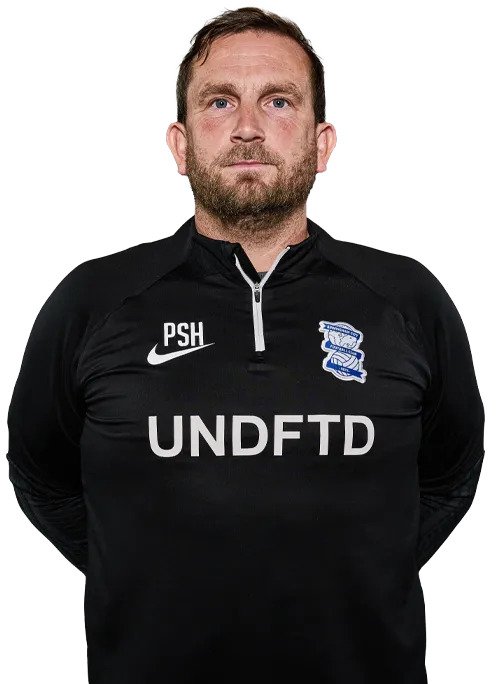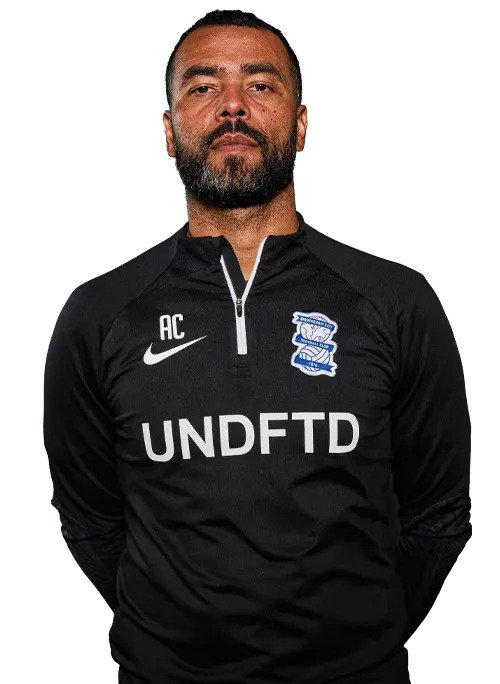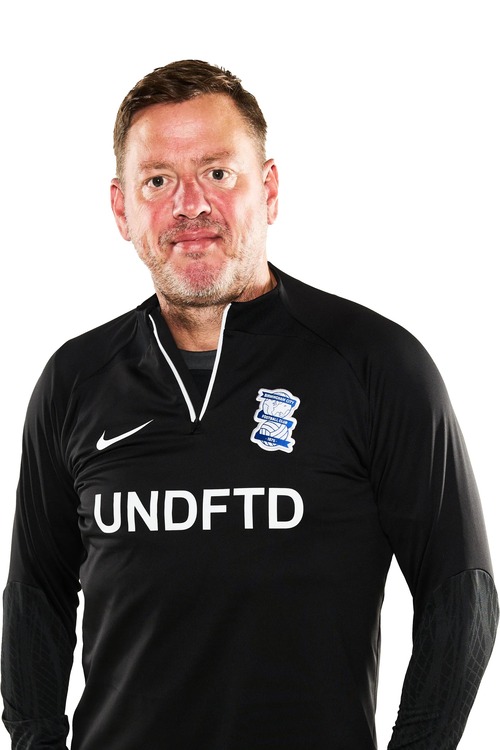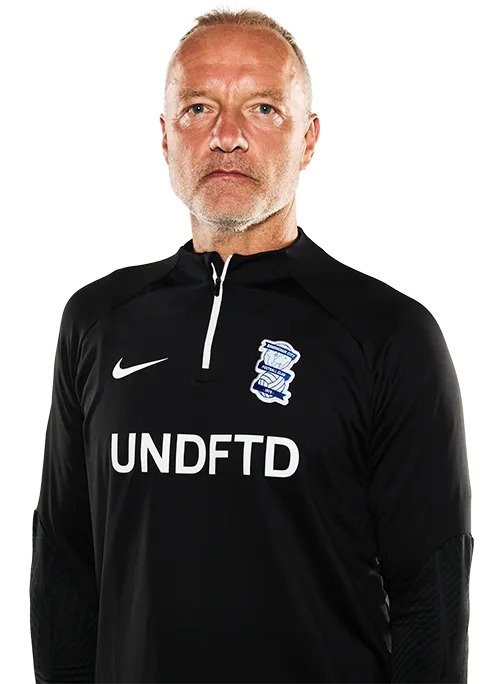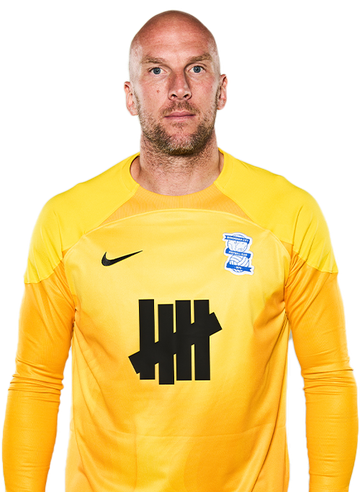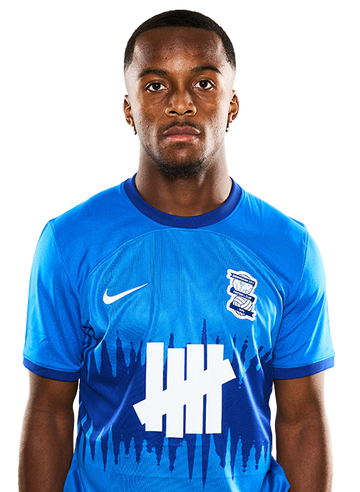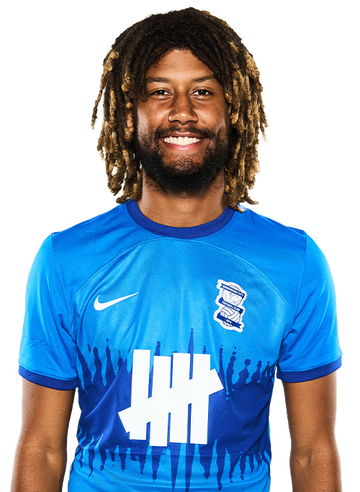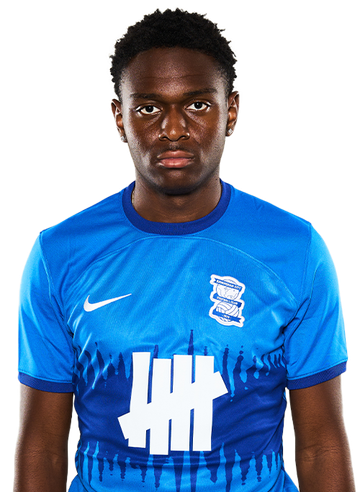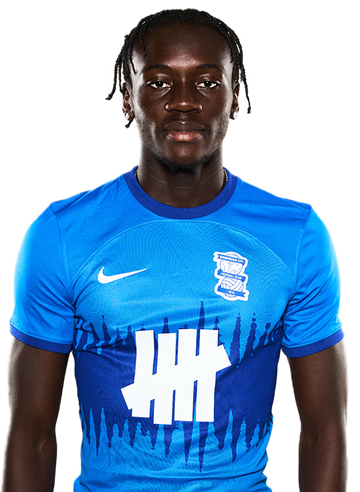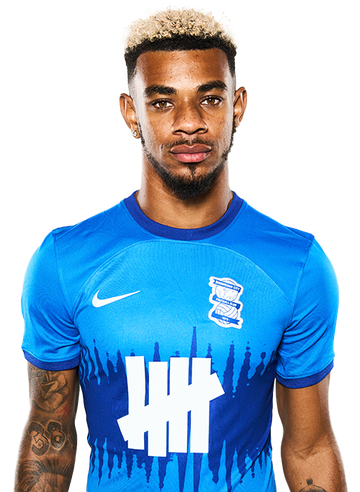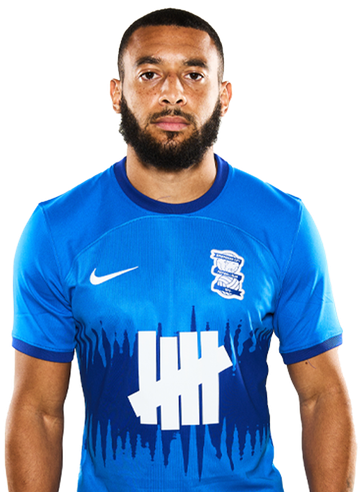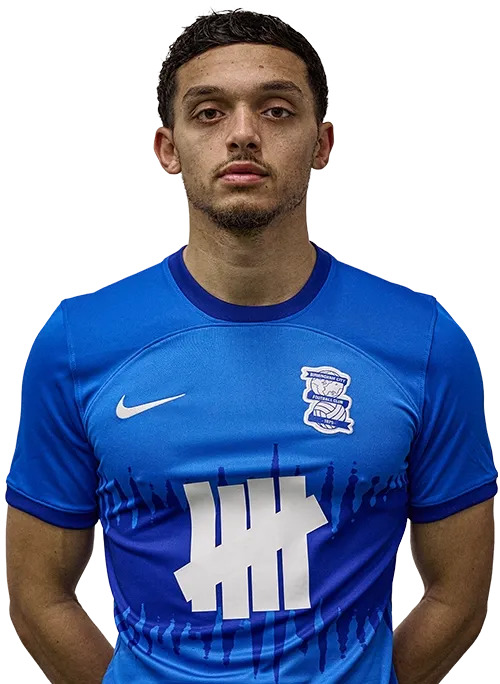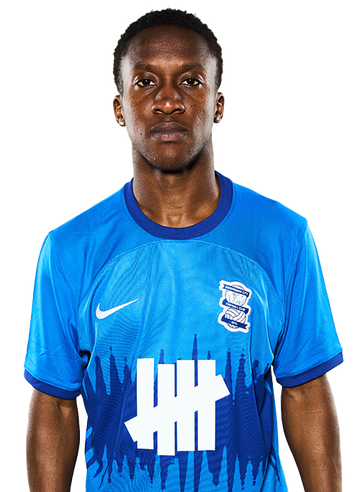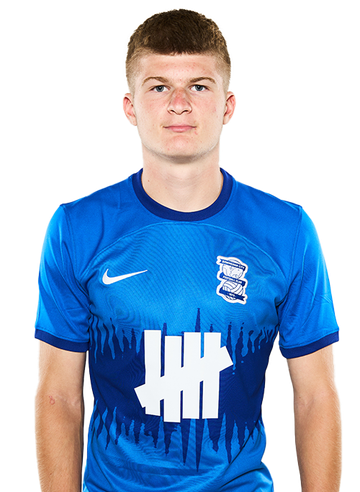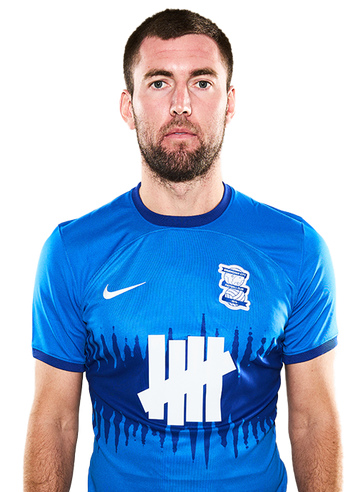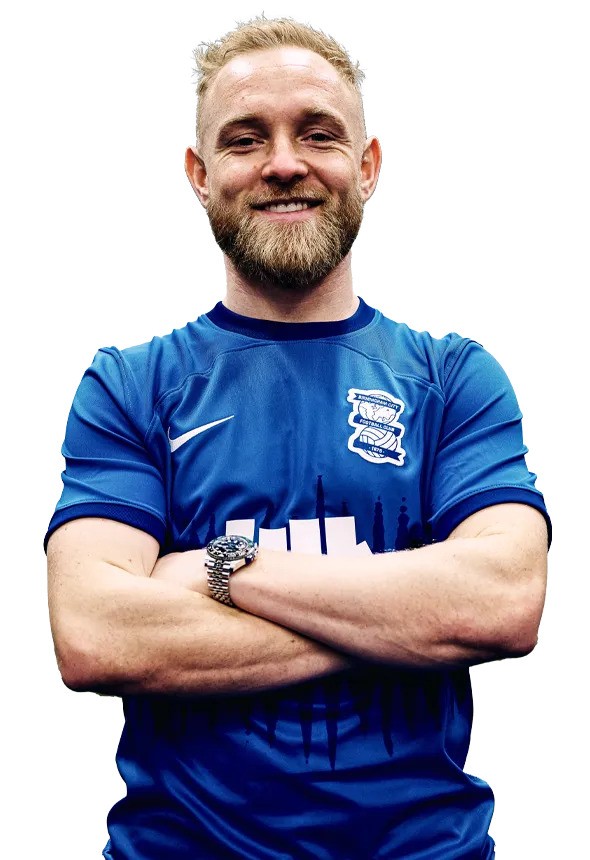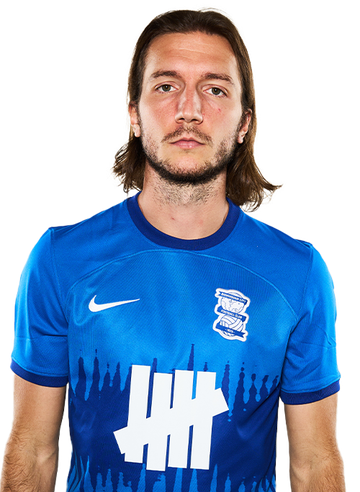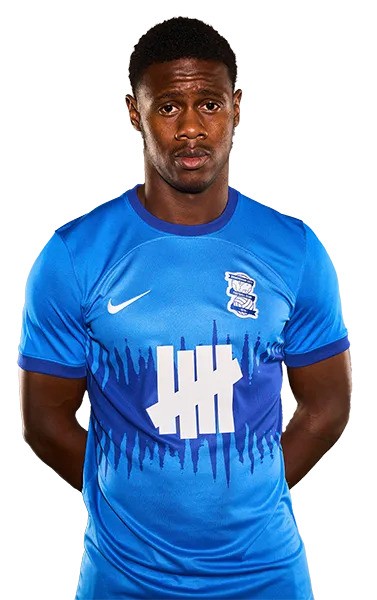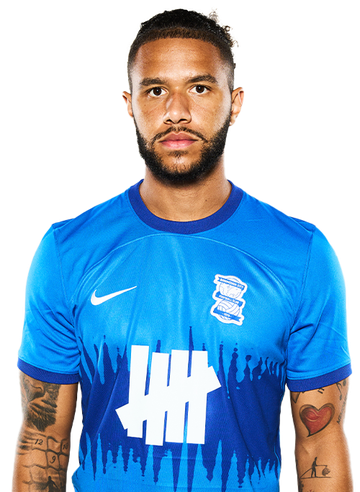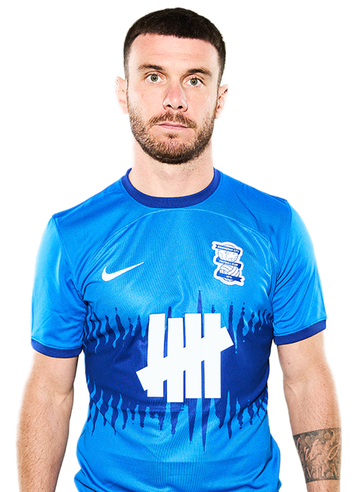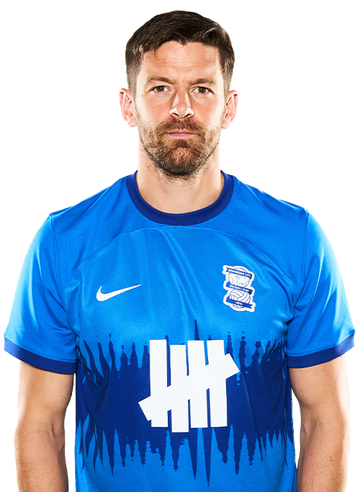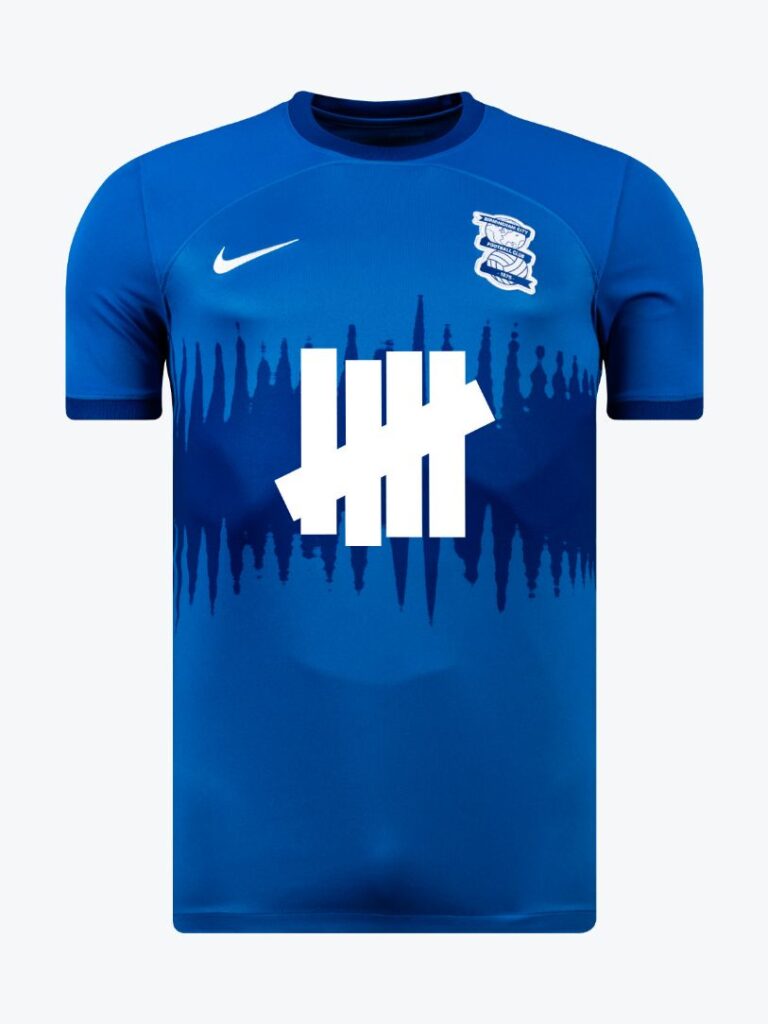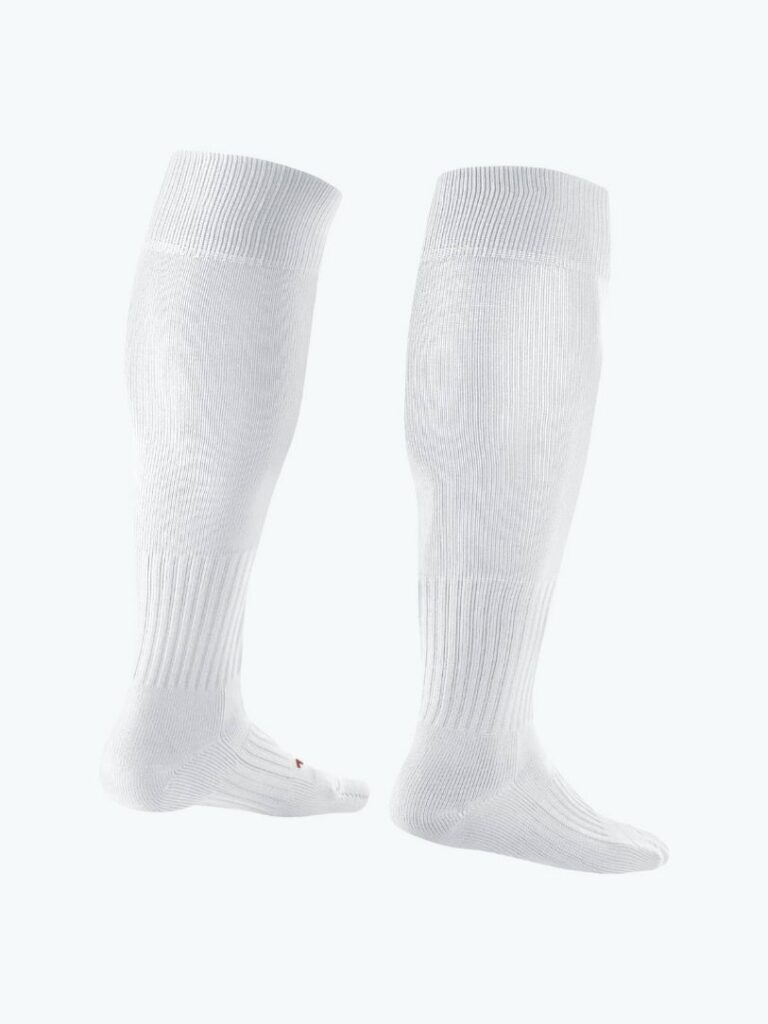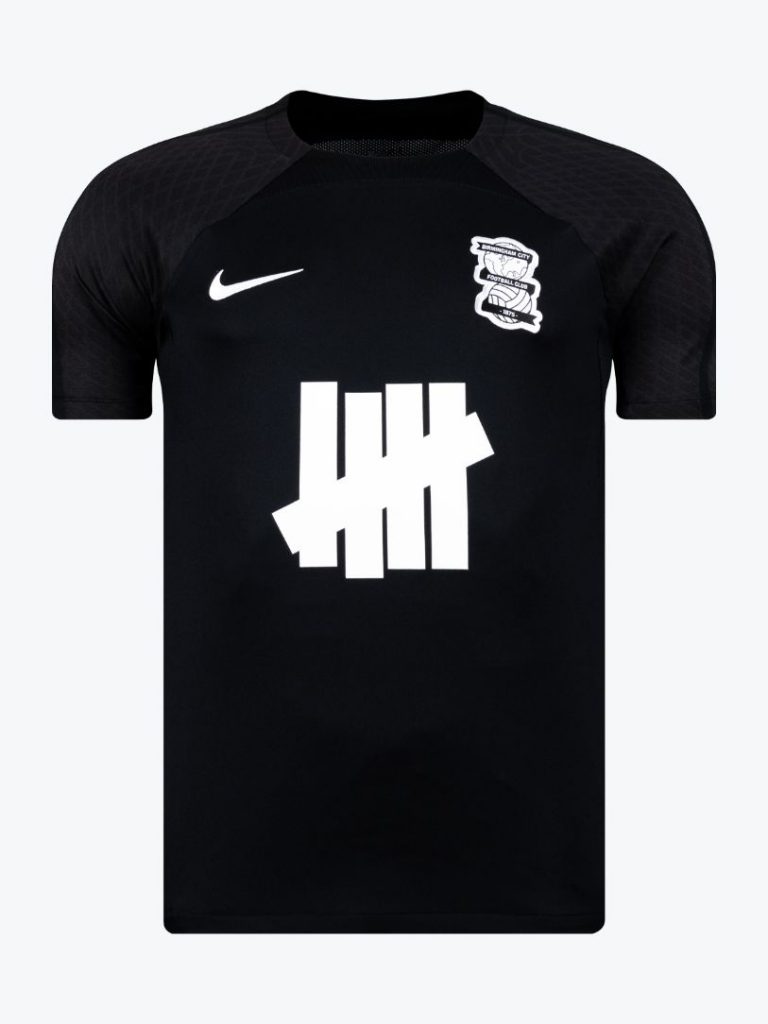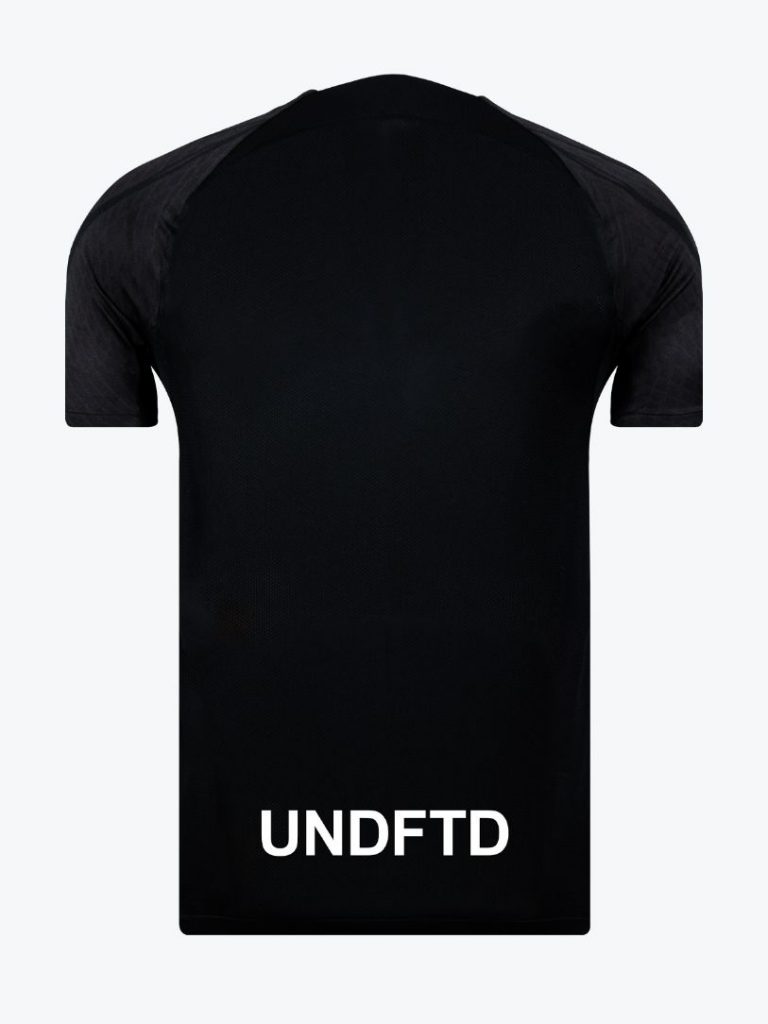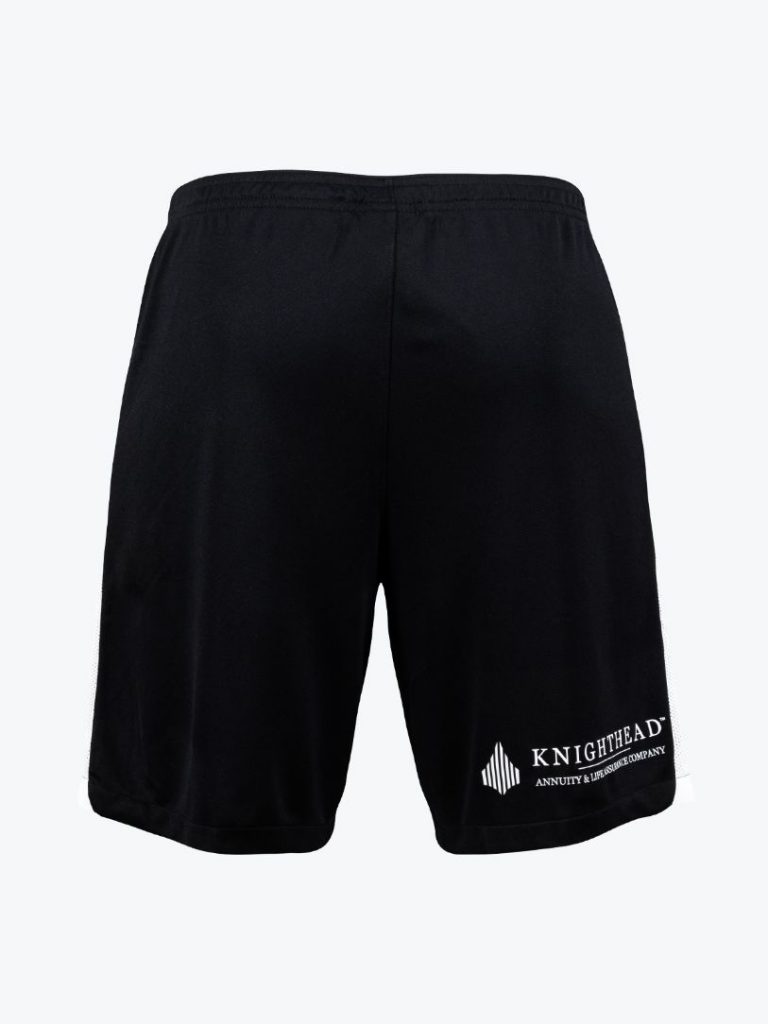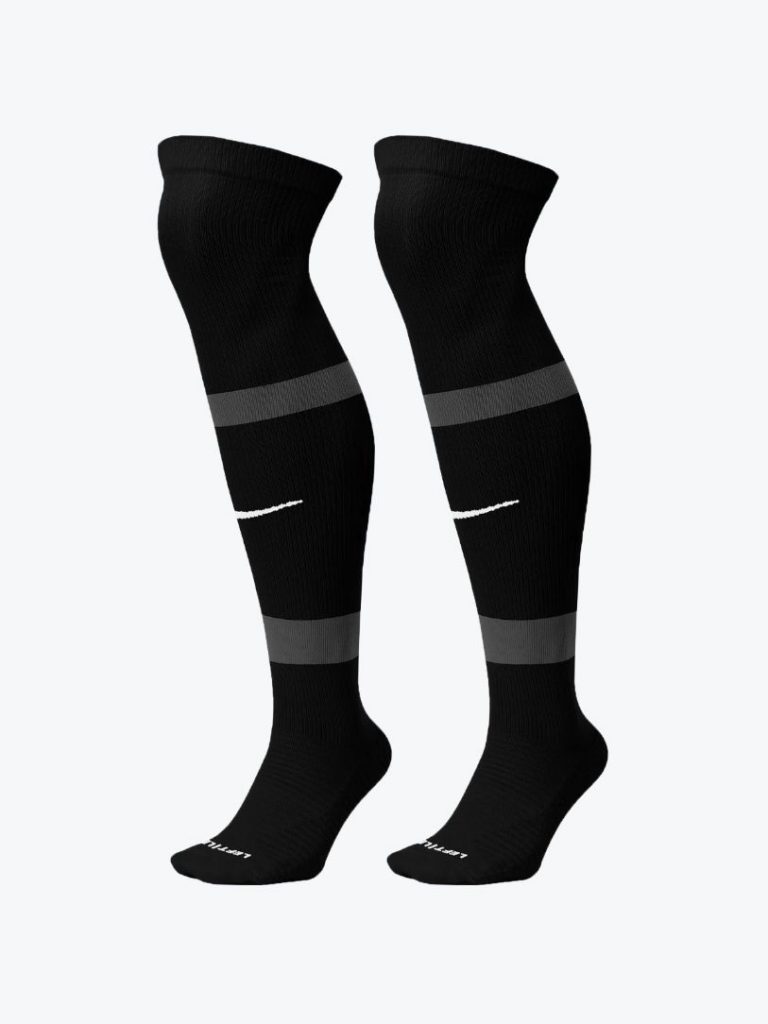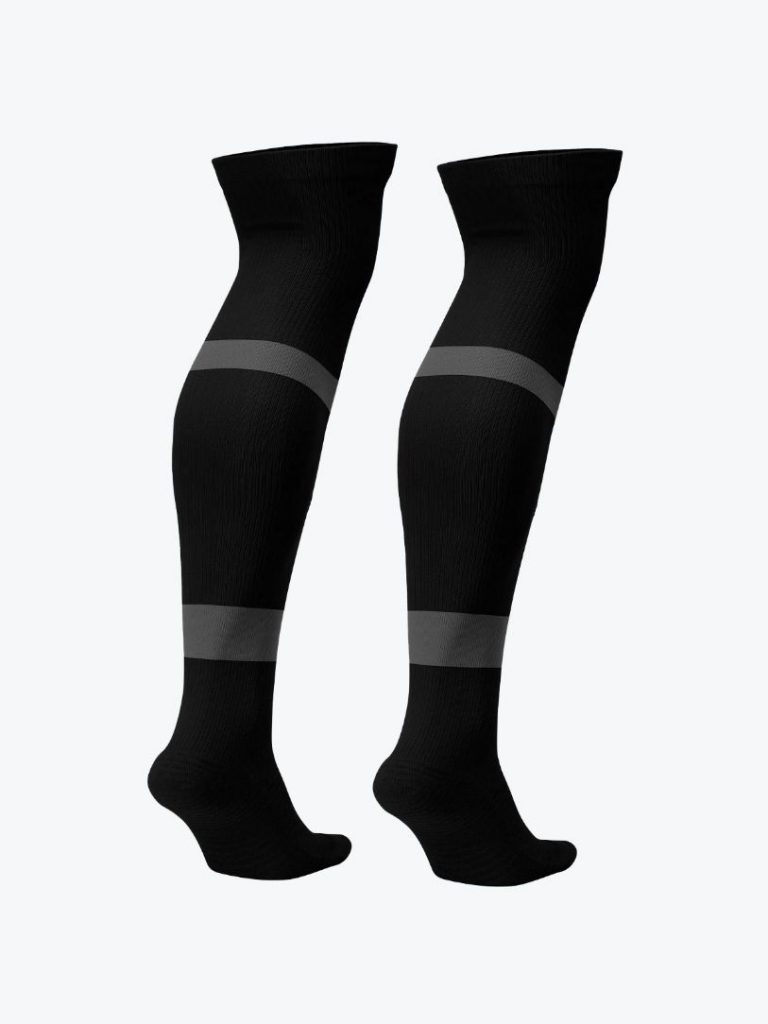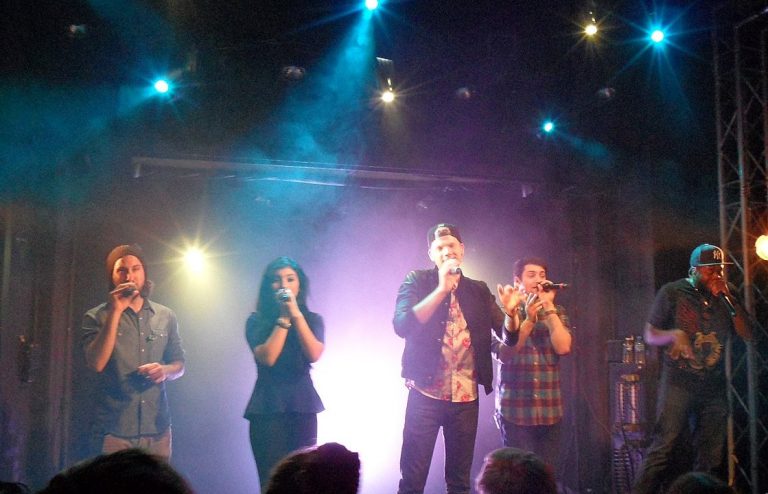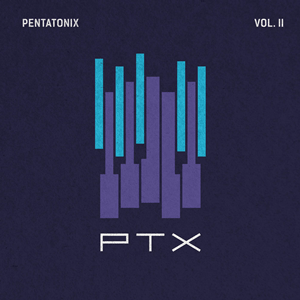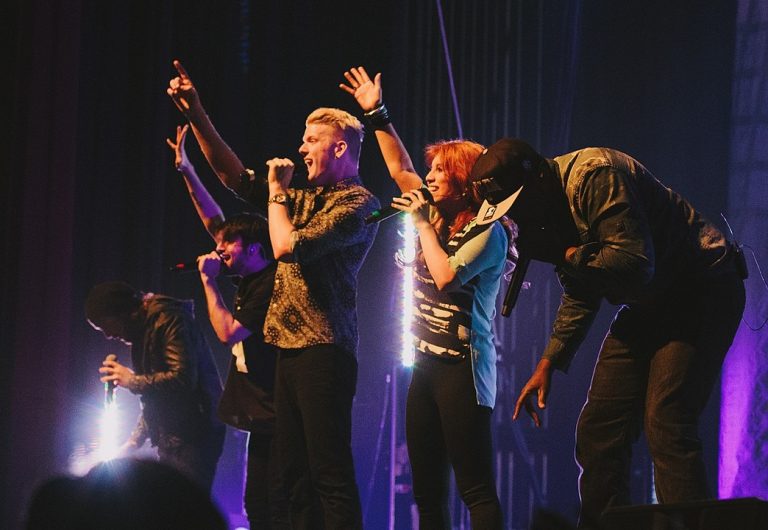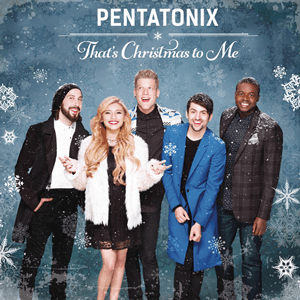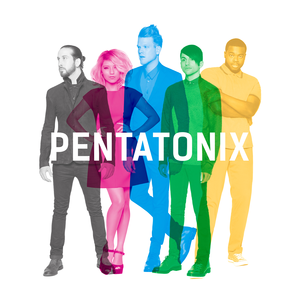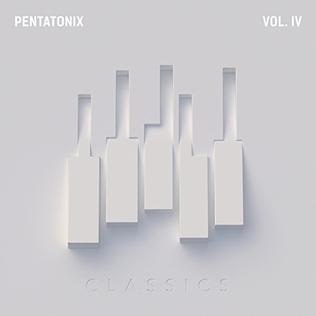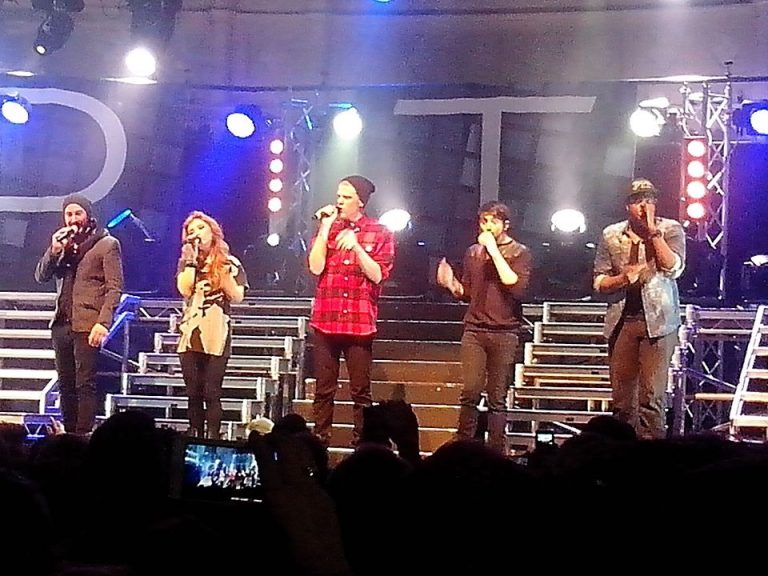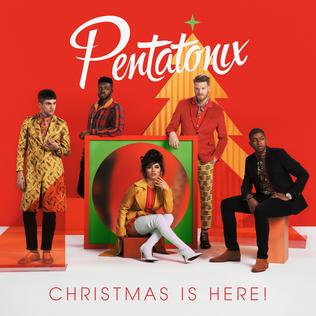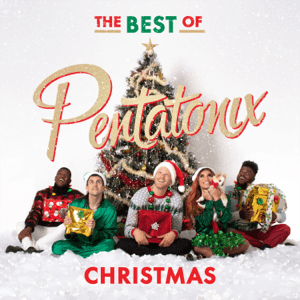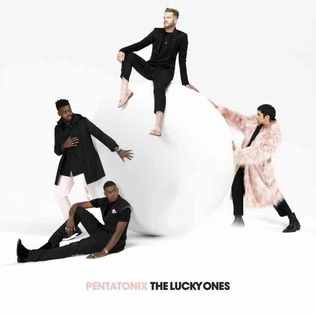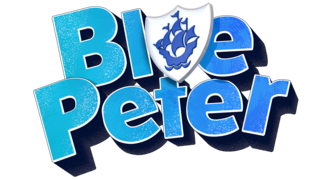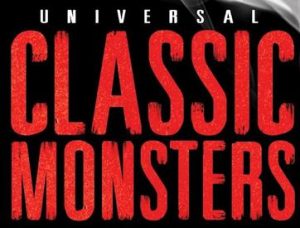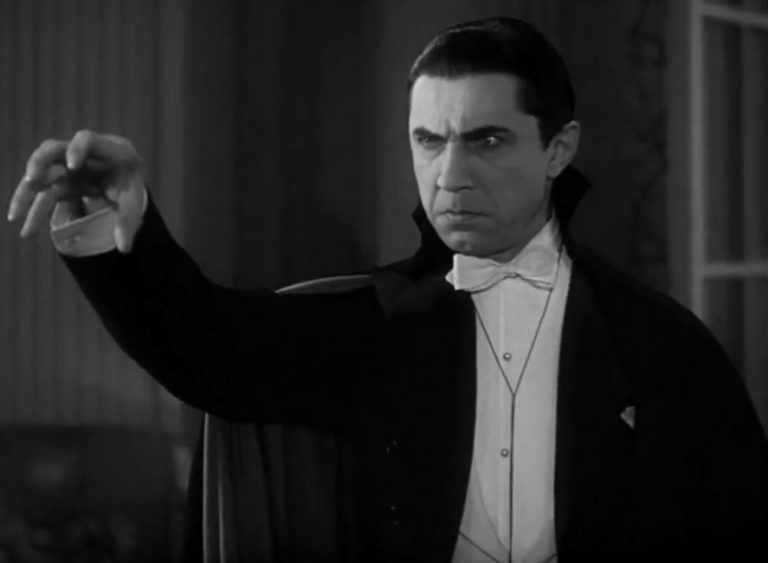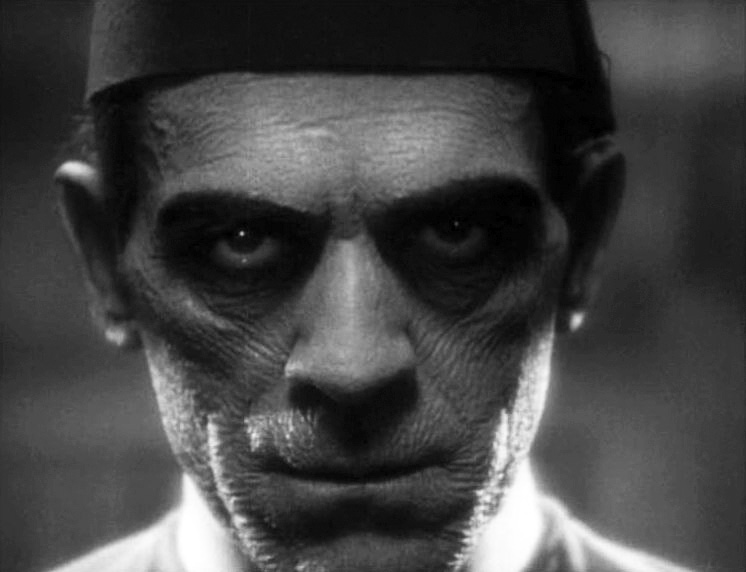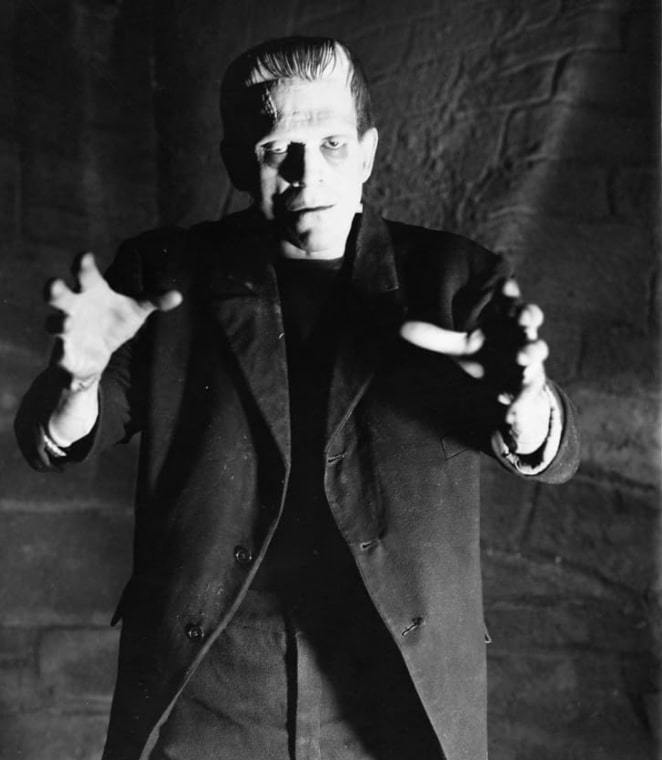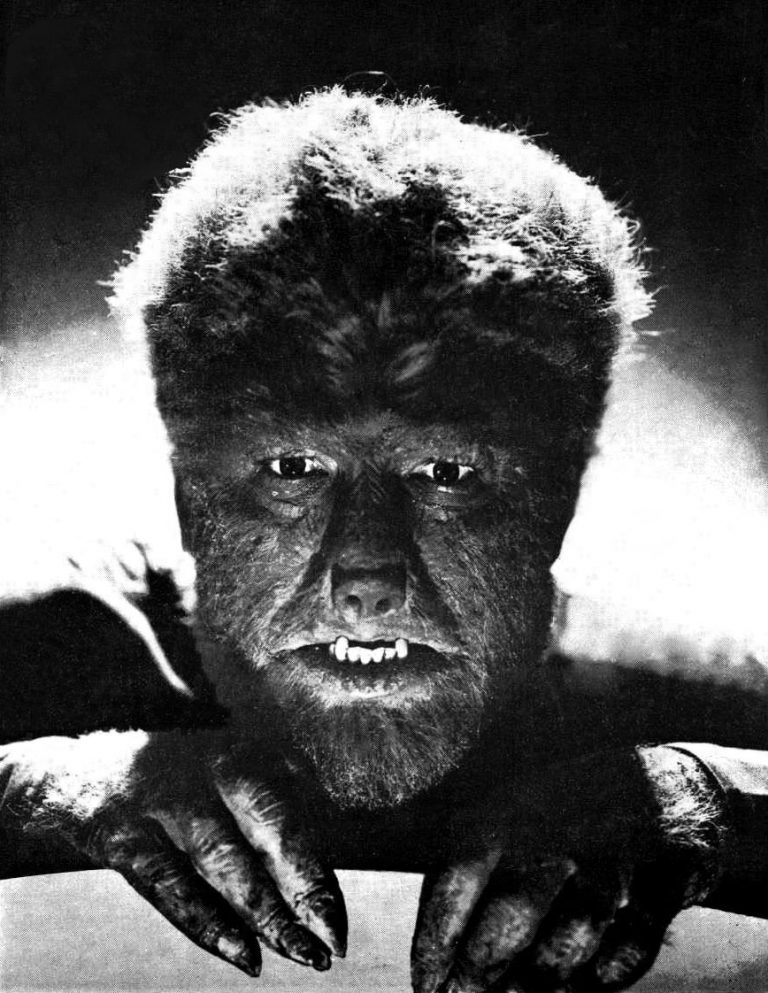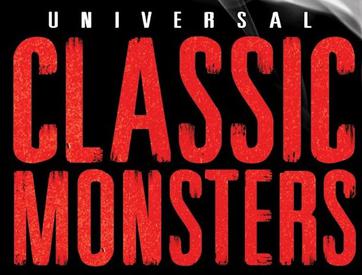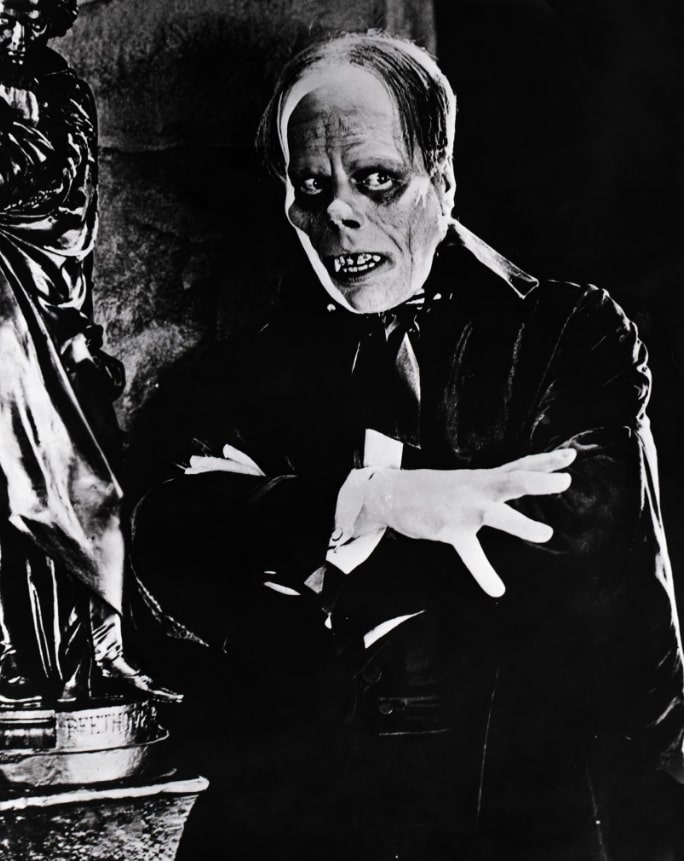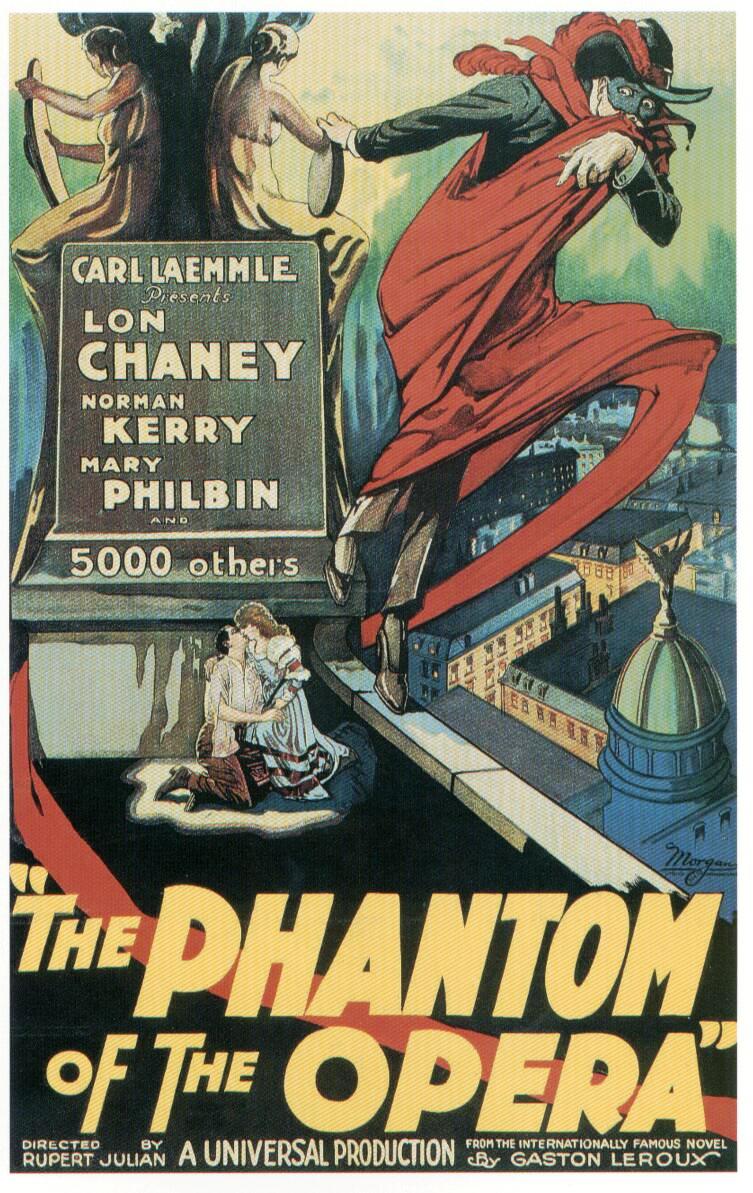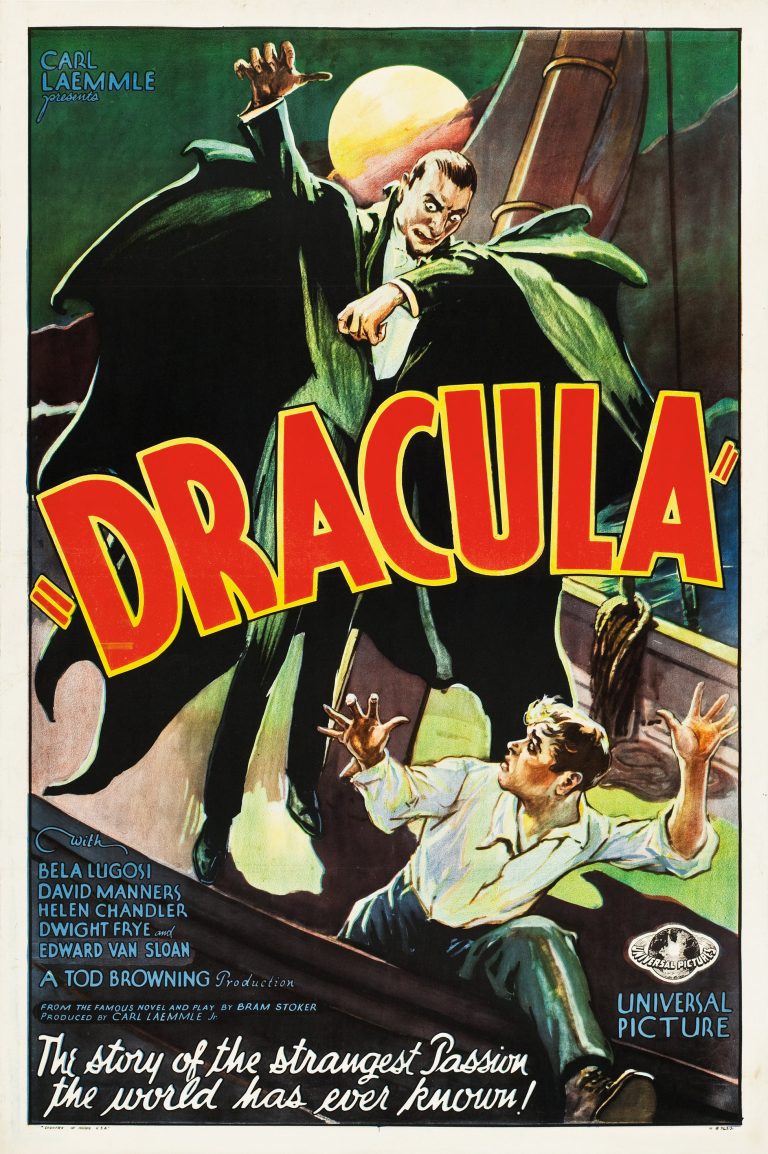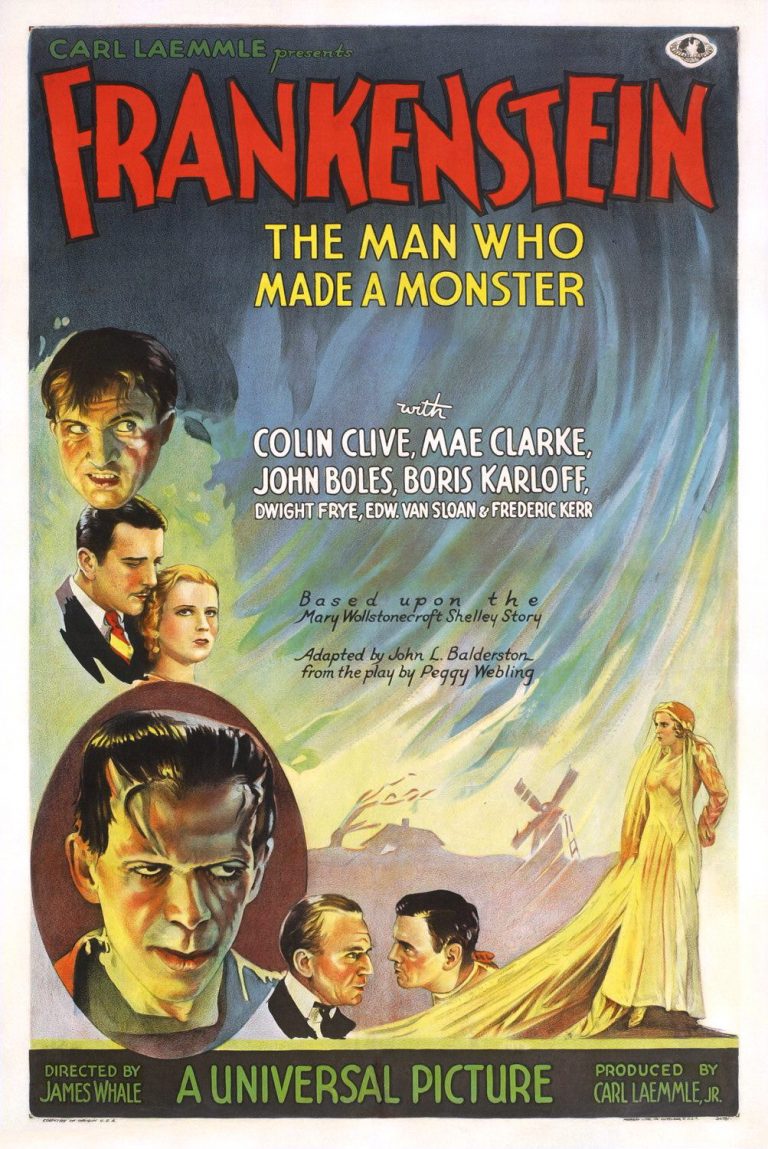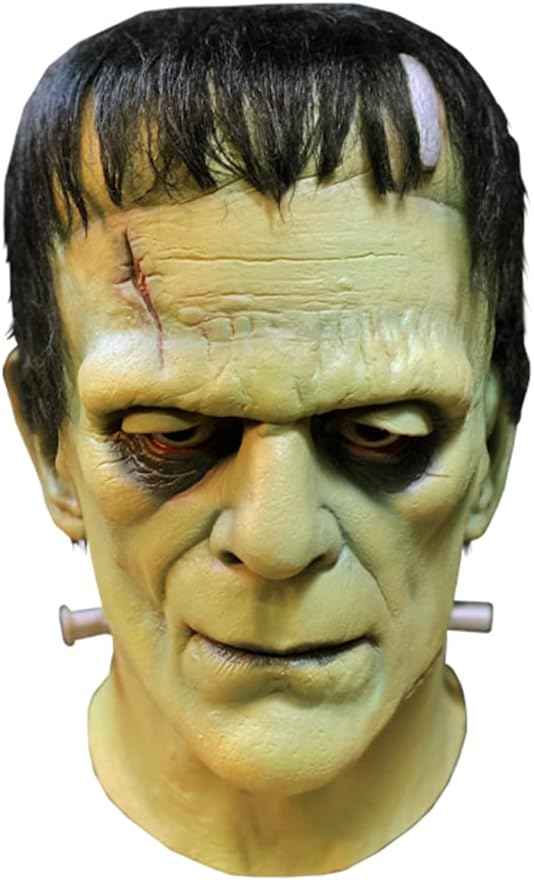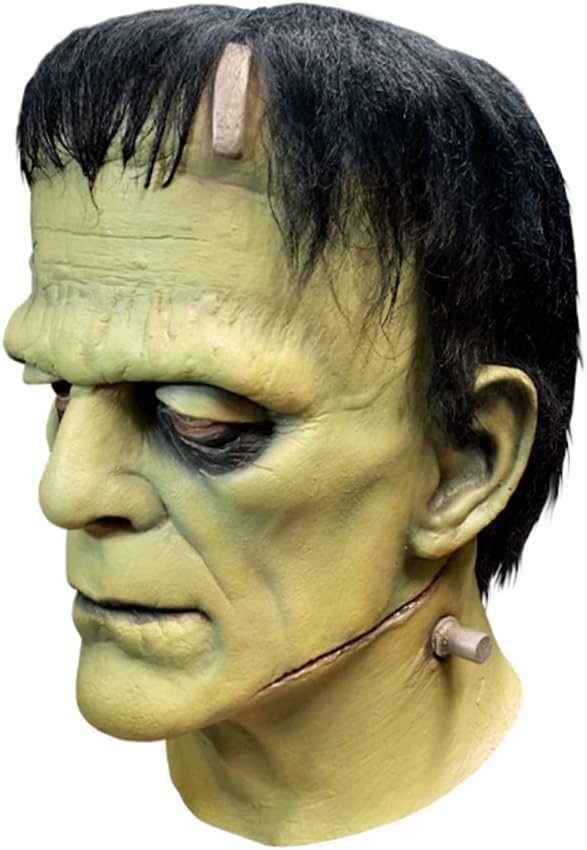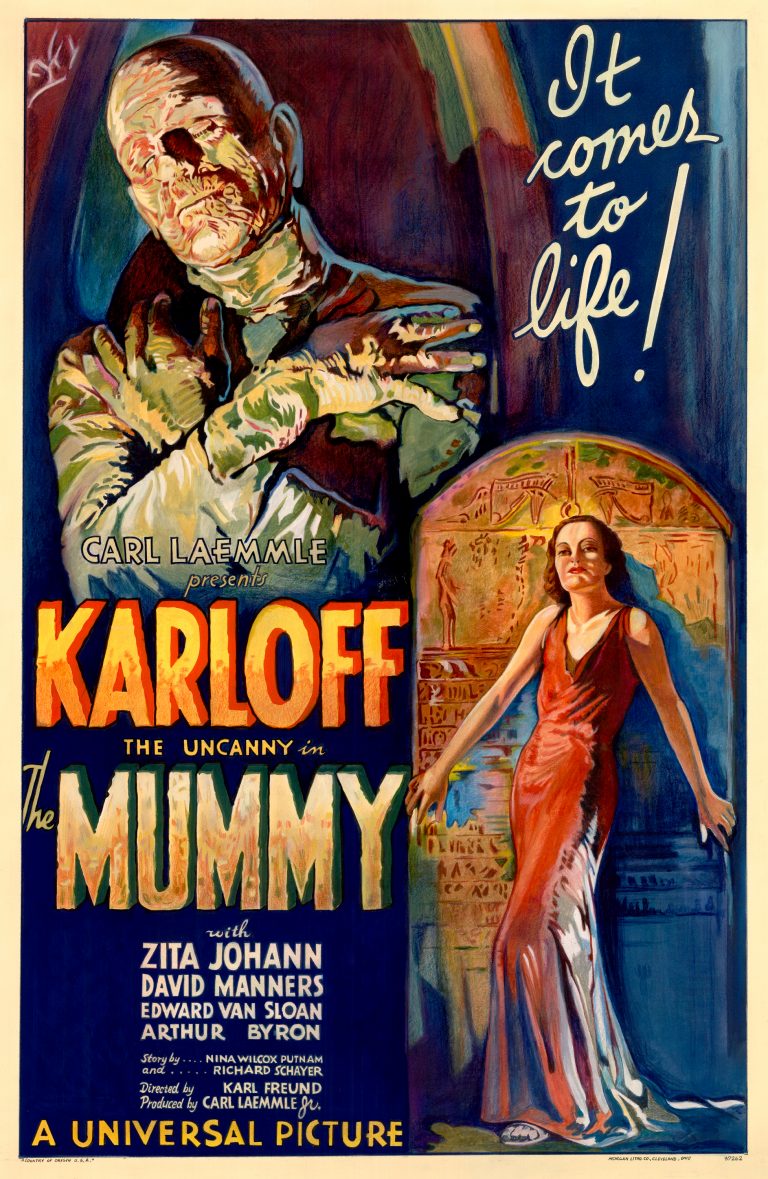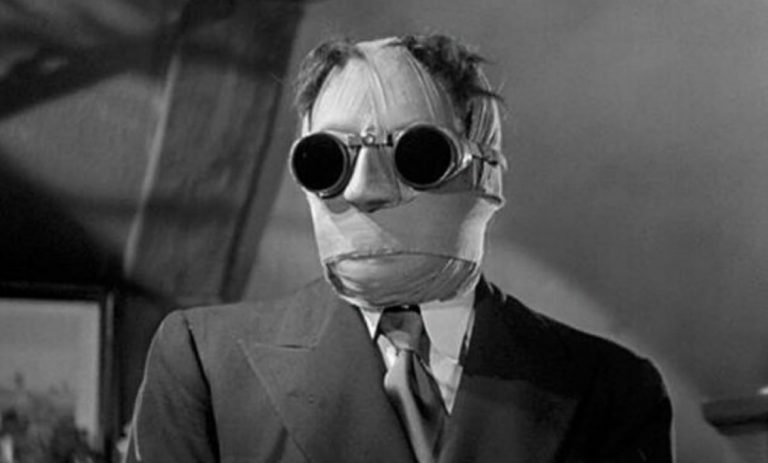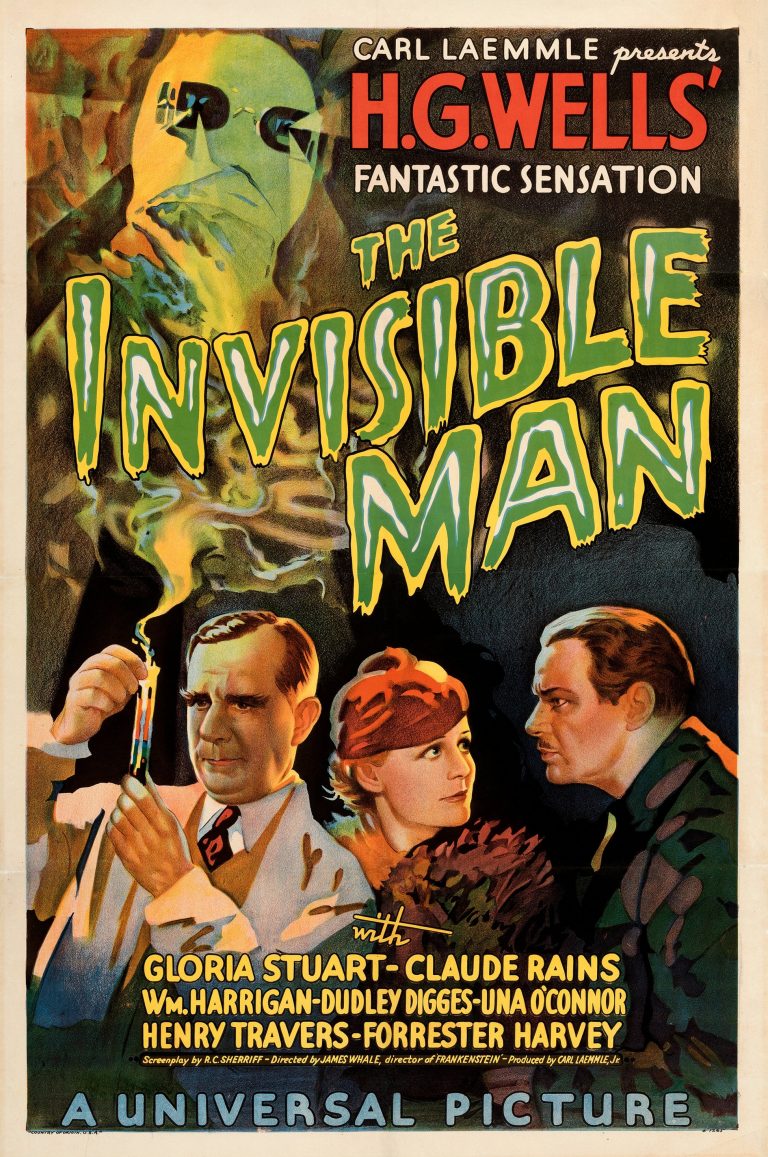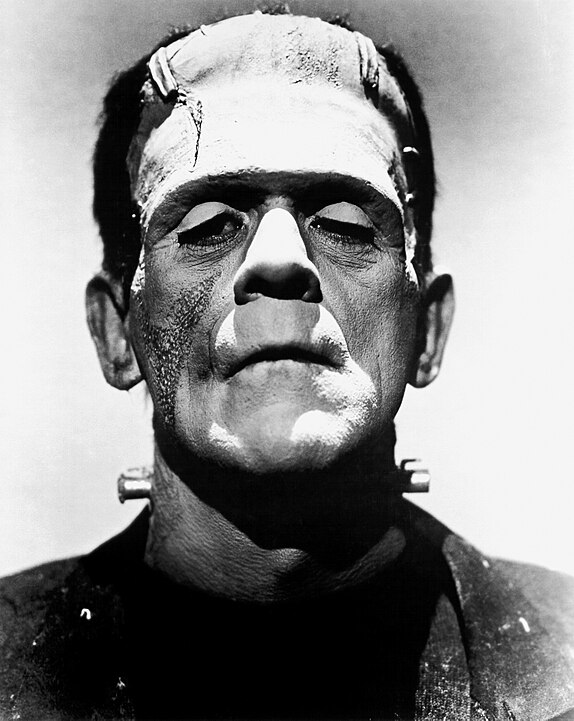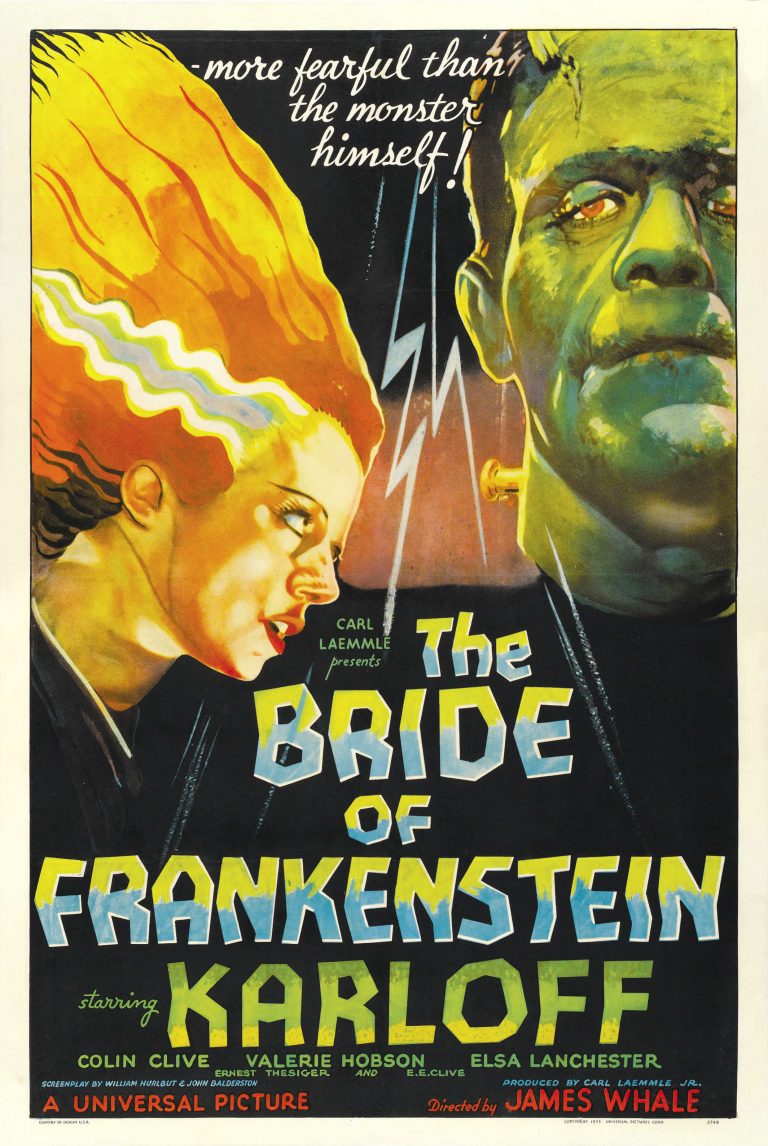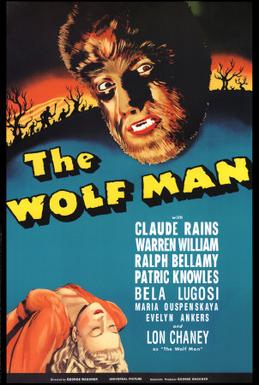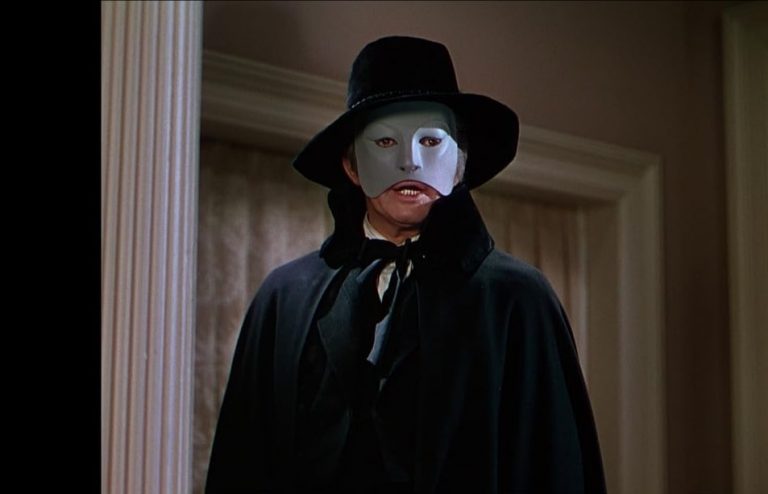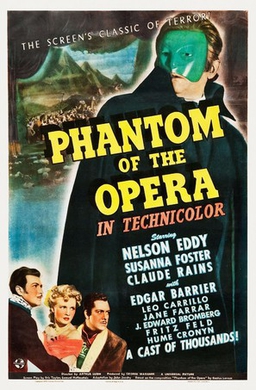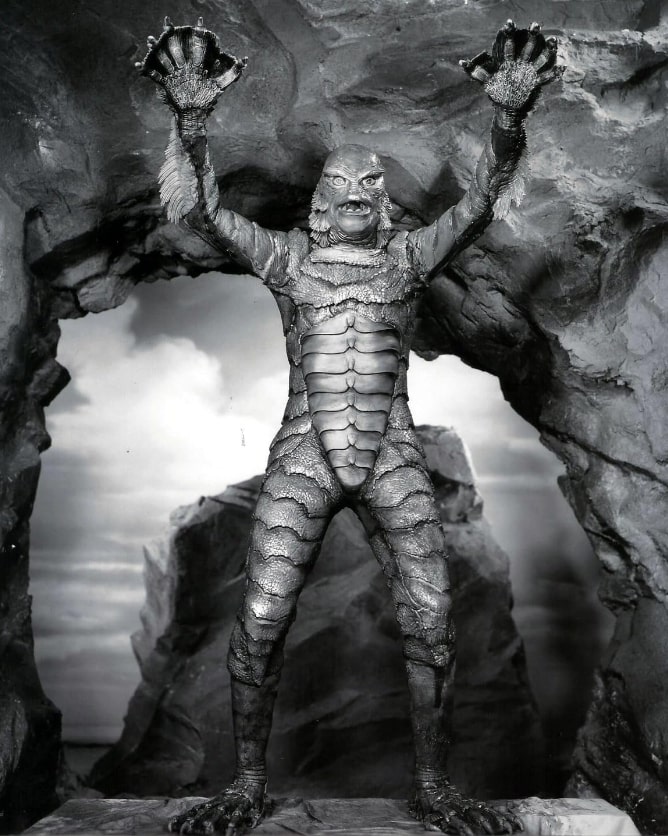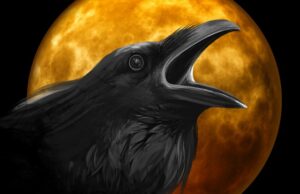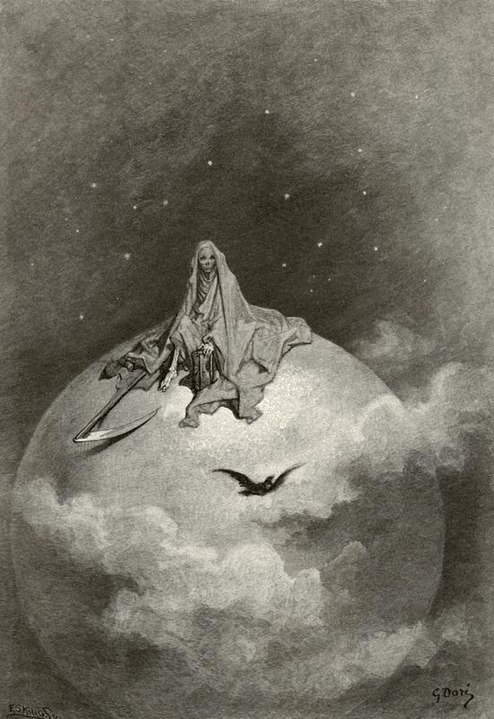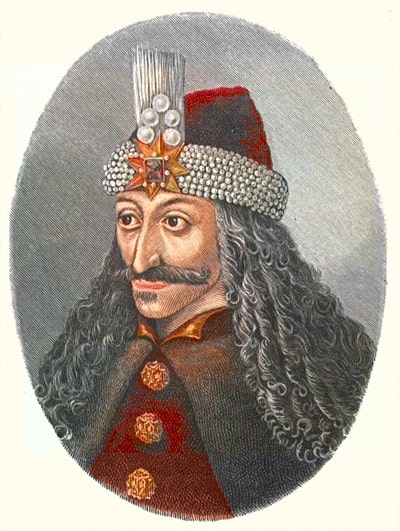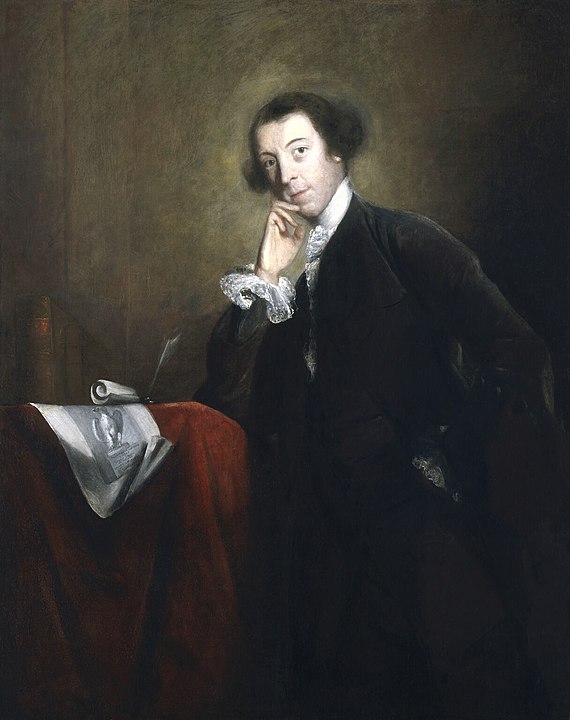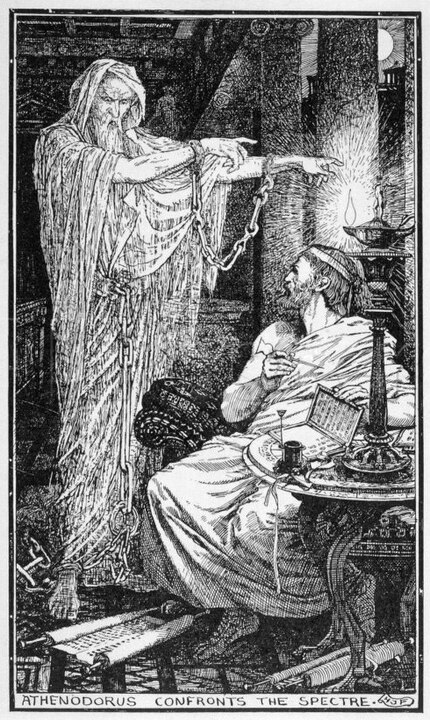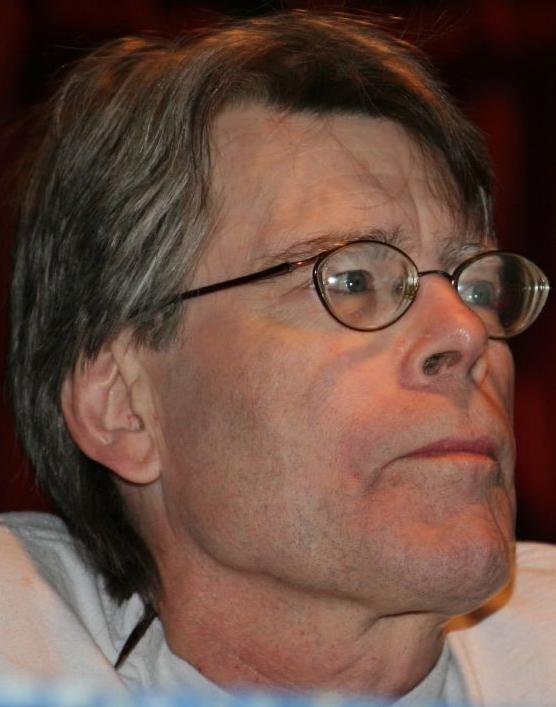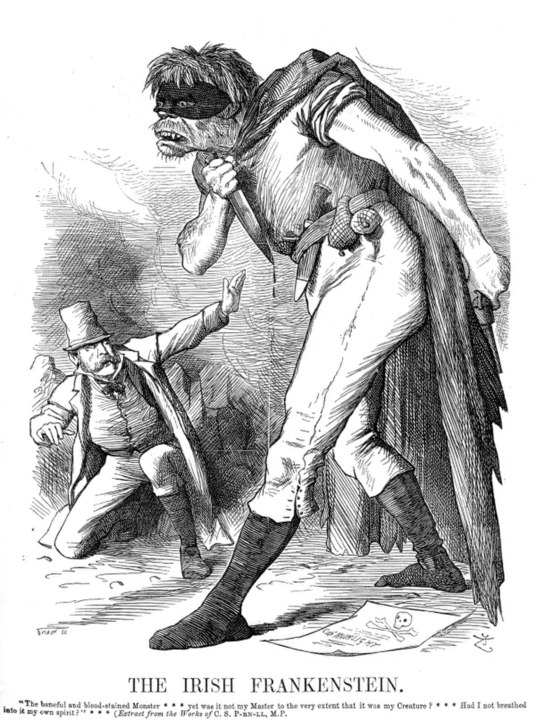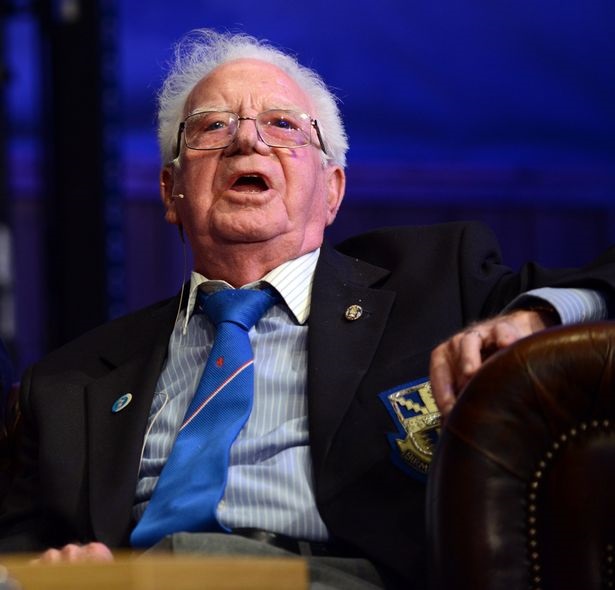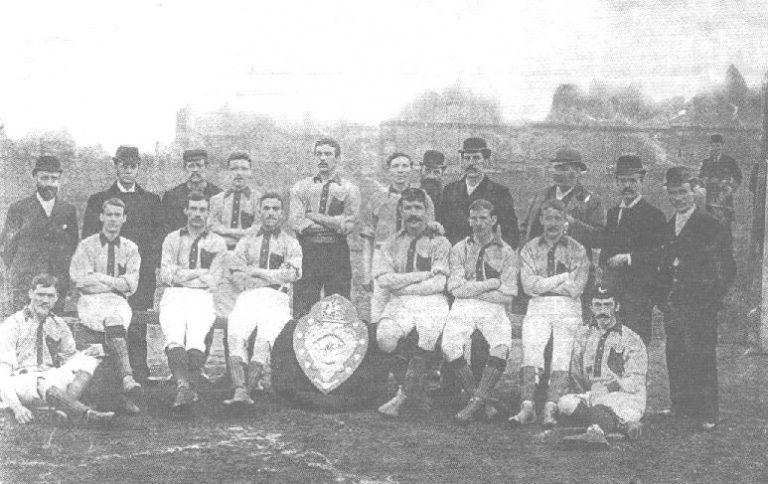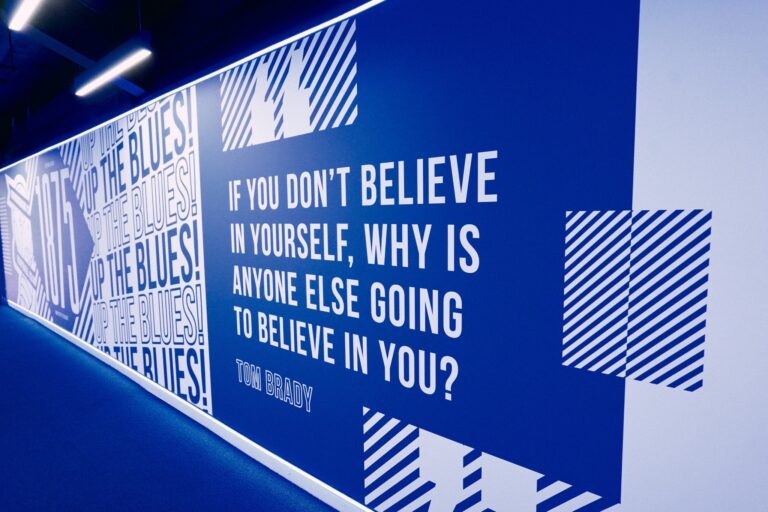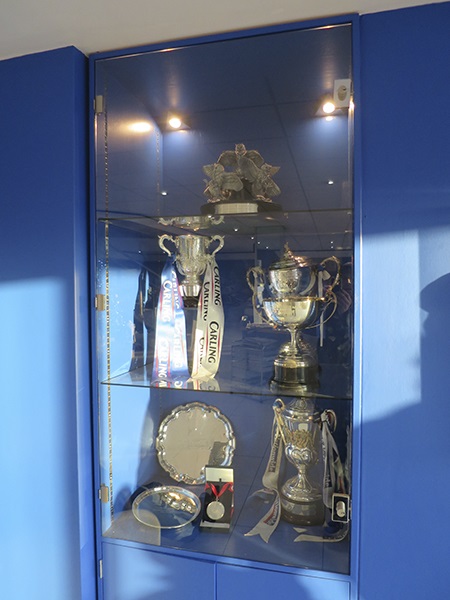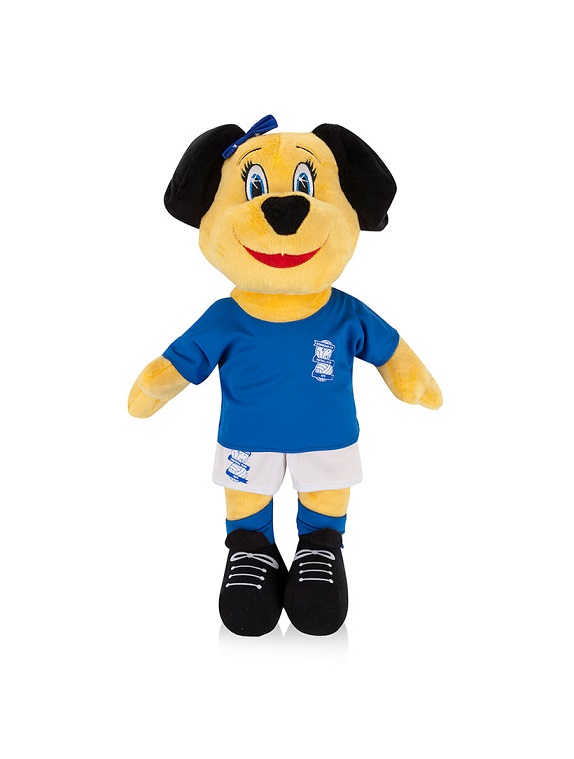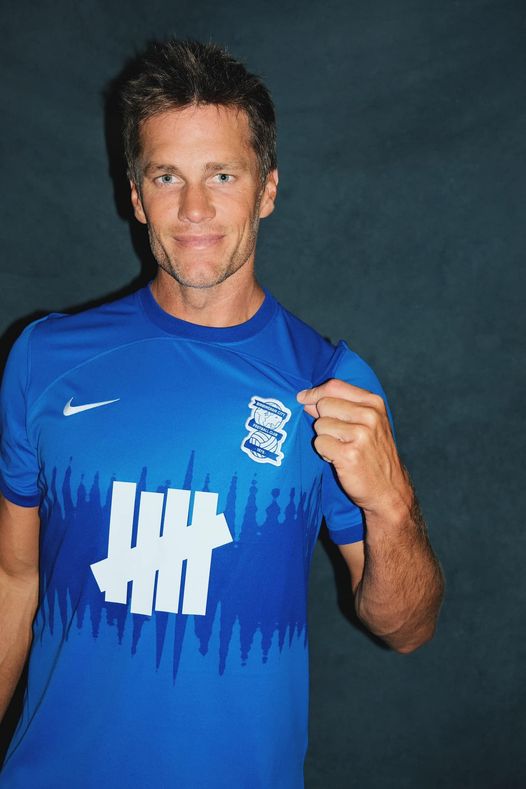
There is only one team in Birmingham worth supporting with true passion and Birmingham City is it. I have been supporting them since 1978 when Jim Smith was the manager. He is my favourite manager to date. I am a blue nose ’til I die.
You can read lots more about Blues by clicking here.
I haven’t been so excited about a new football season starting as I have been for the 2023/24 one in a VERY long time.
The Chinese owners were the worse thing to happen to this club and I thought the Kumar brothers were bad. What followed (despite a cup win) was eventual relegation from the Premier League and misery for sixteen years. Blues fans always had hope in their hearts that the good times will return again and now, thanks to Tom Wagner, they will. It will take time and patience but their is no doubt that the road is long and there will always be joys and sorrows too but there is something POSITIVE for a change to look forward to at the end of the road and I, for one, CAN’T WAIT and you can see the new owners input and progress below.
I look positively to the days, months and years ahead to see where the new owners take us from here. One thing for sure is it will be onwards and upwards and that is no less than anyone involved with Birmingham City deserve.
Before Knighthead
Small Heath Football Club became a limited company in 1888. The board was made up of local businessmen and dignitaries for the next 77 years.
In 1965 the club was sold to Clifford Coombs. By the mid-1980’s the club was in financial trouble (a recurring pattern in the many years to follow). Control passed to Ken Wheldon and he sold it to the Kumar brothers in April 1989.
In March 1993, David Sullivan brought B.C.F.C. from the Kumars and St. Andrews got modernised (although that turned out to be shoddy work in the end). As much as I resent Sullivan for selling us on to Carson Yeung and Grandtop International Holdings Limited in July 2007, it can not be denied that he and David Gold and his brother Ralph Gold saved us from administration.
Yeung turned out to be corrupt and the rest of the Chinese owners seemed no better. They all were without a clue or care about how to run a football club. Yeung was sent to prison and Grandtop International Holdings Limited took full ownership of the club and renamed themselves Birmingham International Holdings Limited.
In June 2022 an attempt to buy the club was made by a group fronted by Laurence Bassini, involving financier Keith Harris using money loaned by David Sullivan and thankfully nothing became from that.
In July 2023 a consortium led by Paul Richardson and Maxi López announced that they were close to completing the purchase of a stake in the club, and later confirmed that they were providing operating funds but pulled out in December citing a failure to agree on revisions to the original terms of agreement. Following that in April 2023, Richardson, López and their proposed chief executive, Matt Southall, were sanctioned by the English Football League after admitting to breaching take-over regulations without approval. That turned out to be a blessing in disguise.
This brings us up to April 2023 and Birmingham Sports Holdings confirmed letters of intent had been signed to sell 24% of their shares in Birmingham City and the 21.64% owned by Oriental Rainbow, as well as the whole of St. Andrews which they 100% owned to a then-unnamed potential purchaser. In July 2023 the purchaser was named to be Shelby Companies Ltd, a subsidiary of asset management company Knighthead Capital Management fronted by Tom Wagner, Knighthead’s co-founder and co-C.E.O.
The Next Chapter With Knighthead
From this point onwards you can read all about the new owners, news etc. on and off the pitch and how it affects Birmingham City during the 2023/24 season, the season the next chapter began for Blues. To keep up with all the news from the club click here.
May 2023
A Letter To Supporters From Tom Wagner – 08/05/2023

A letter from Tom Wagner.
On the 8th of May, 2023, Knighthead Co-Founder and Co-C.E.O. Tom Wagner confirmed that, through its affiliate, Shelby Companies Limited, it has exchanged contracts with the majority owners of Birmingham City Football Club including Birmingham Sports Holdings Limited subject to approval from the Hong Kong Stock Exchange and customary regulatory authority approvals in the U.K. Approvals are anticipated within the coming weeks.
You can read his full letter here.
This is fantastic to hear but until this is official I hold it with trepidation as we Blues fans have been let down so many times up until now!
June 2023
Announcement Regarding Prospective Ownership Of Blues
The Birmingham Mail announced on the 27th of June 2023 the prospective ownership of Blues by Tom Wagner.
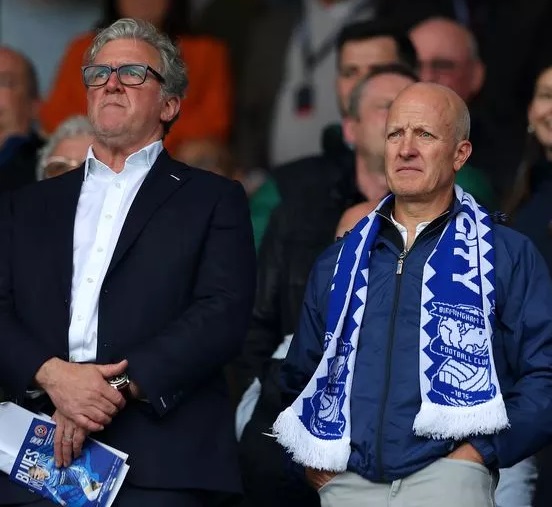
Garry Cook and Tom Wagner at St. Andrews in June 2023.
July 2023
Announcement Regarding Official Take Over By Knighthead And Shelby Companies

Take over announcement.
On the 14th of July 2023, there was a club announcement by the club and it was official, Knighthead and Shelby Companies would acquire full ownership and control of St. Andrew’s and 45.64% ownership of Birmingham City Limited. It was confirmed that Tom Wagner will be the Chairman Of The Board and Garry Cook will be C.E.O.
EXCELLENT NEWS!
Tom Wagner’s First Interview With Blues T.V.
Tom Wagner, Knighthead Co-Founder and Co-C.E.O., talks about a new direction for the Club after Knighthead Capital Management L.L.C. acquired Birmingham City Football Club.
This excellent first interview with Blues T.V. is a pleasure to watch. It is nice to see an owner be so open and sound like he knows what he wants and what he is doing. This is an astute businessman and I look forward to what he will do for us all at Birmingham City and welcome him to the club.
August 2023
Garry Cook’s First Interview With Blues T.V.
Blues C.E.O., Garry Cook, outlines his vision for Birmingham City.
As with Tom Wagner’s above, this excellent interview is a pleasure to watch. Cook is another businessman who knows what he is doing and I also look forward to what he can do for Birmingham City and welcome him.
Tom Brady Joins Birmingham City
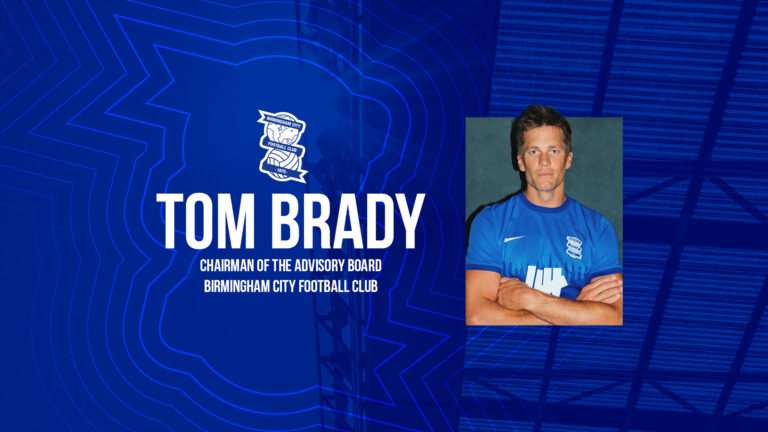
Brady announcement.
As if the wonderful news of new owners wasn’t enough to take in for Blues fans and the fact we have been dealing well in the transfer market for the new season and actually buying players instead of having loads of loans, the club made another announcement that one of the world’s greatest sportsmen ever, seven-time Super Bowl champion Tom Brady was joining as Chairman of the advisory board.
Click here to watch Brady’s message to the fans
Tom Wagner Visits The Training Ground For The First Time
On the 11th of August, 2023, Chairman of the Board, Tom Wagner, and the Knighthead team visited the Elite Performance Innovation Centre for the first time to meet the players and management staff during training.



Tom Wagner greets staff and players at Blues training ground.
Tom Wagner, Garry Cook And Tom Brady Attend Blues First Home Game Of The 2023/24 Season Versus Leeds United
On Saturday, August 12th, 2023, Tom Wagner, Garry Cook and Tom Brady attended Blues first home game of the 2023/24 season against Leeds United. This was Blues highest home crowd since 2020.
Apart from showing their TRUE support for the fans and Birmingham City (they did more for morale for Blues in the first four weeks since they took over than the previous Chinese owners ever did in sixteen years) they were also here to join in with the celebration of club legend Trevor Francis and pay tribute to him.

Tom Wagner mixes with some of Blues younger supporters.

Tom Wagner signing a young Blues supporters top.
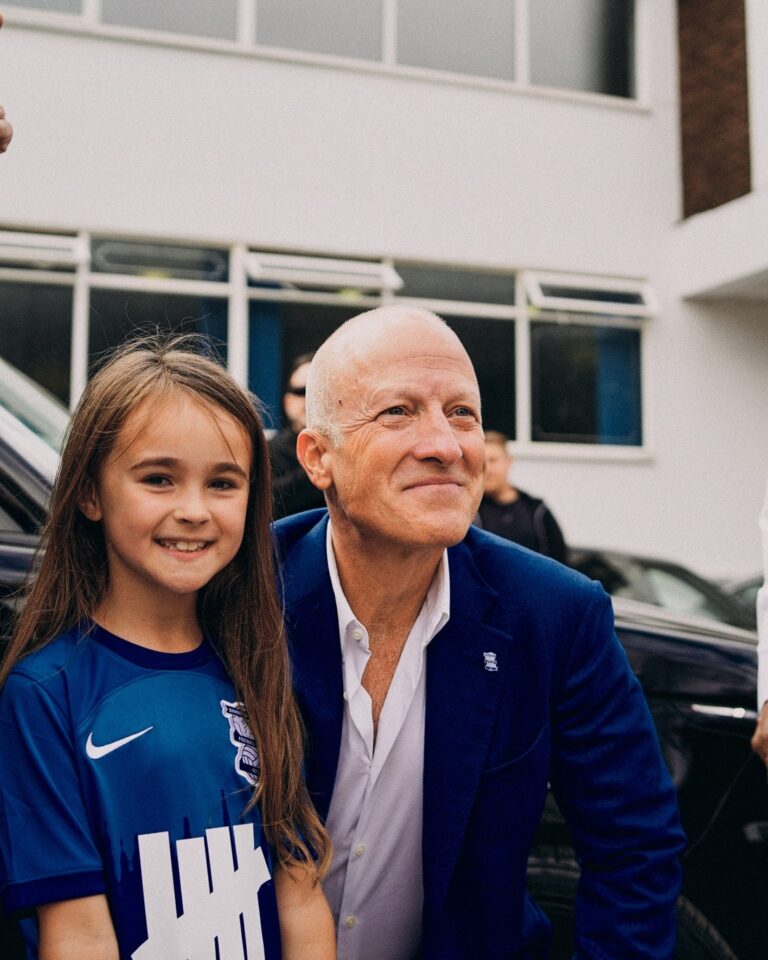
Tom Wagner with a young Blues supporter.
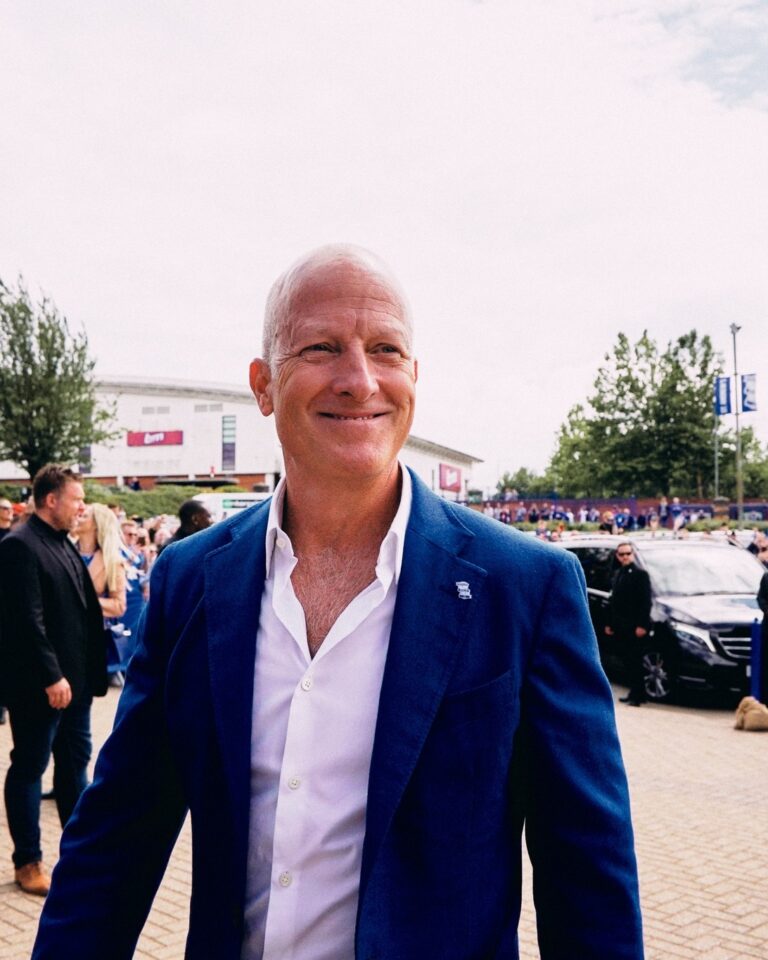
Tom Wagner at his first match at St. Andrews versus Leeds United.


Tom Brady arrives at St. Andrew’s for the first time.

Tom Brady signing young Blues supporters tops.

Tom Wagner, Garry Cook and Tom Brady showing their passion at their first match at St. Andrews versus Leeds United at full time. Tom is showing passion like a proper owner should.

Tom Wagner, Garry Cook and Tom Brady showing their passion at their first match at St. Andrews versus Leeds United at full time.


Tom Wagner showing passion at his first match at St. Andrews versus Leeds United at full time.

Tom Wagner and Tom Brady after their first match together at St. Andrews versus Leeds United.
Tom Wagner and Tom Brady talk about a special day at St. Andrew’s.
These two men are enjoyable to watch and know what they are talking about.
A Letter To Supporters From Garry Cook – 13/08/2023
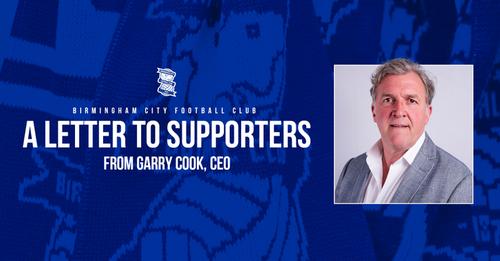
A letter from Garry Cook.
On the 14th of August, 2023, following the first home game of the 2023/24 season against Leeds United, Garry Cook wrote a letter to Birmingham City supporters thanking the fans for their support at our first home game against Leeds United. He also highlighted the important work that will go on off the pitch. You can read it here.

Safe standing at St. Andrews announcement.
On the 17th of August, 2023, just a few hours after it was shown elsewhere on social media, Blues made an announcement stating the contractor, the Buckingham Group, who were responsible for working on the lower tiers of the Tilton and Kop stands (with safe standing shown above) have gone into administration.
There was a time, during the dark days of the previous owners that I would be very concerned about this but I have no doubt Tom Wagner is quickly working on this to get a replacement contractor a.s.a.p. and it just shows his commitment to Blues supporters in how much we are being kept in the loop of everything involved with the club at all times.
A Letter To Supporters From Garry Cook – 24/08/2023

Garry Cook.
On the 24th of August, 2023, Garry Cook wrote another letter to the fans, this time regarding the lack of stock of our replica kits. He also informed them that the third kit would be coming soon. You can read it here.
I love the way the new owners care about their supporters and are keeping us in the loop. It certainly makes a refreshing change.
September 2023
Announcement Regarding Mace

Mace announcment.
On the 11th of September, 2023, Blues made an announcement stating that a new contractor had been found to carry on the work following the Buckingham Group’s administration. The company’s name is Mace. The work will recommence at 9 a.m. on Monday the 11th of September 2023 is now expected to be completed before the end of November 2023.
This is great news for all Blues fans and we look forward to St. Andrew’s capacity being close to 30,000 when it is completed.
Tom Wagner Attends Preston North End Versus Birmingham City
On Tuesday, September 19th, 2023, Tom Wagner, was in the away end watching Blues play against Preston North End. He even brought them drinks at half time. This is FANTASTIC and this man as my TOTAL RESPECT. What a PROPER owner we have here.
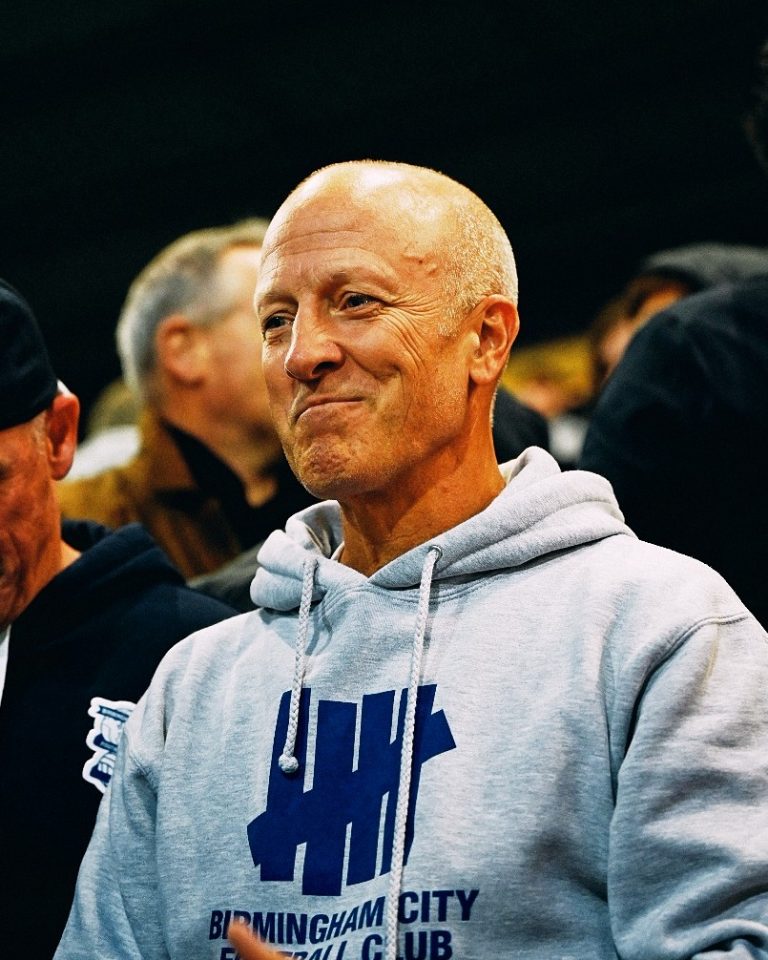
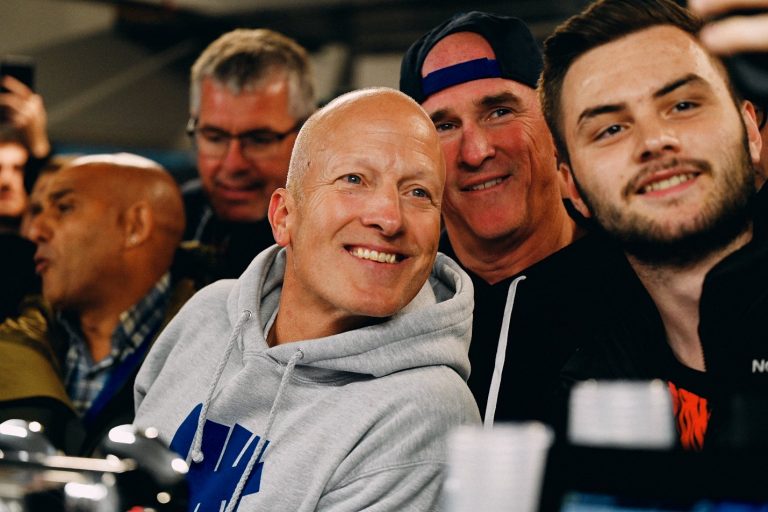
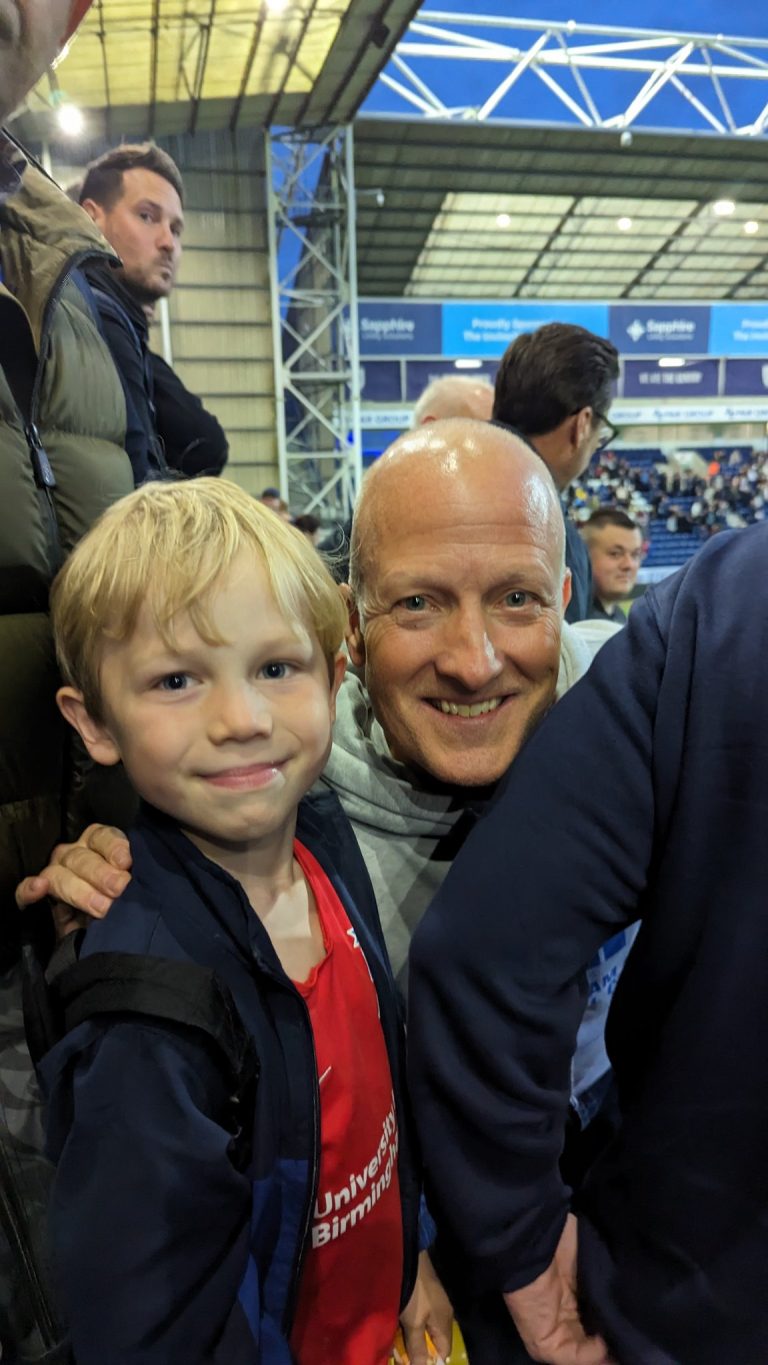
Tom Wagner in the away end with the Blues fans watching Preston North End v Birmingham City.
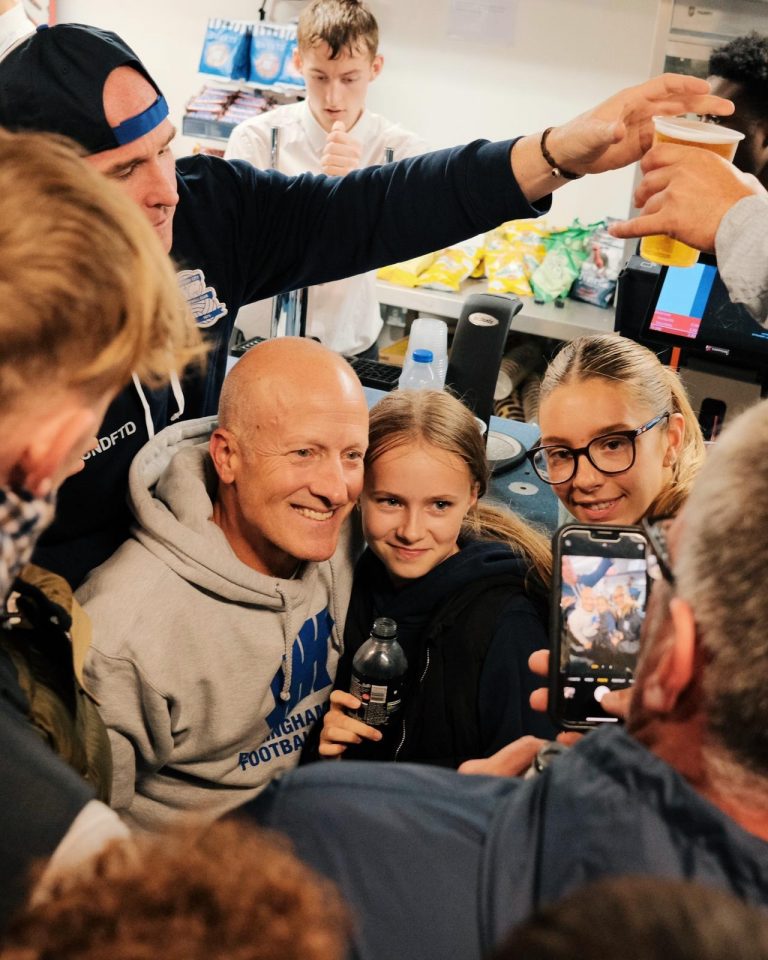
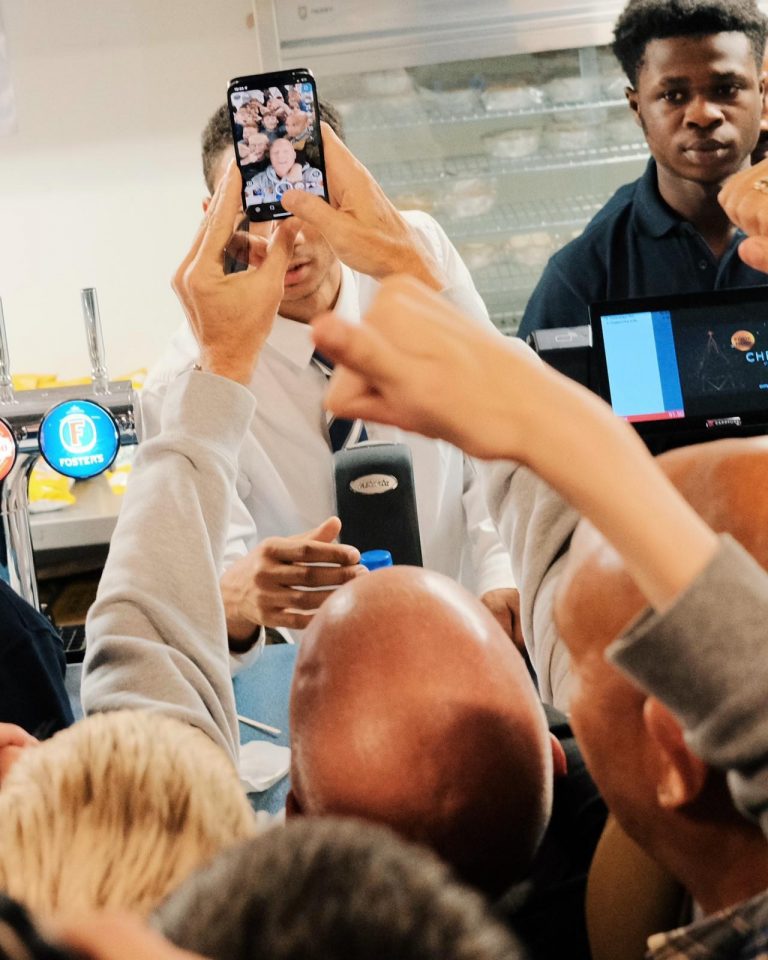
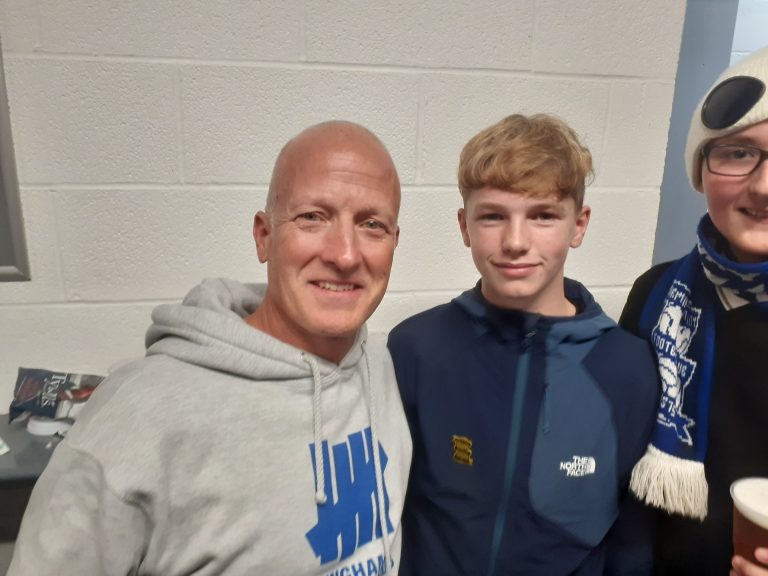
Tom Wagner buying the Blues fans food and drinks at half time and having photos with them at the Preston North End v Birmingham City match.
Tom Wagner And Garry Cook Attend Birmingham City Versus Queens Park Rangers
On Friday, September 22nd, 2023, Tom Wagner and Garry Cook watched Blues play against Queens Park Rangers.
The club were supporting Help Harry Help Others for this game and helping to raise funds for them. The founder of the charity is Harry Moseley (who started his campaign back in 2003 by making bracelets), with help from his mom Georgina. It raises money for cancer victims. You can read all about the charity here. There are more links in the Notes And Links section at the bottom of this page.
The day before the match John Eustace and Dion Sanderson informed Blues fans about Help Harry Help Others and the connection with the game. You can see the short video here.
Bracelets were made for everyone who attended the match and details on how to donate were supplied with each one.
If you want to donate £3 you can do so by texting HARRY3 to 70800 or you can contribute here.
Help Harry Help Others
Georgina Mosely explains how Help Harry Help Others started.
This is a charity close to Birmingham City’s heart and worthy of any support it gets.
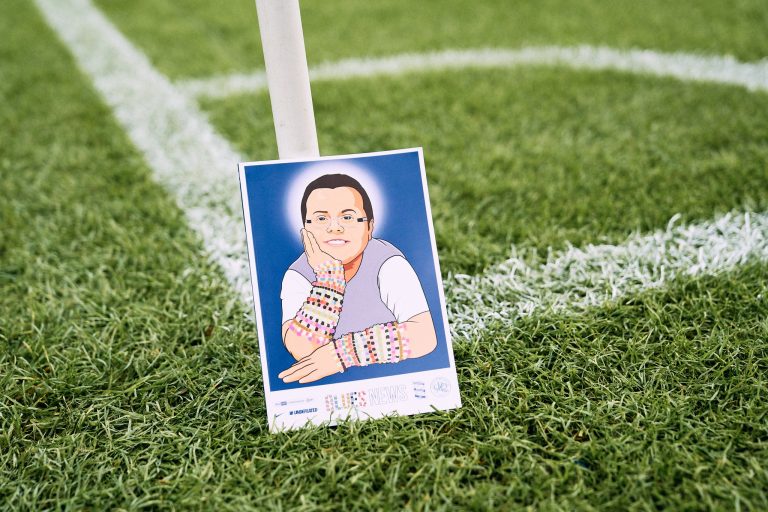
Blues News v Queens Park Rangers match programme 22/09/2023 with Harry Moseley on the cover.
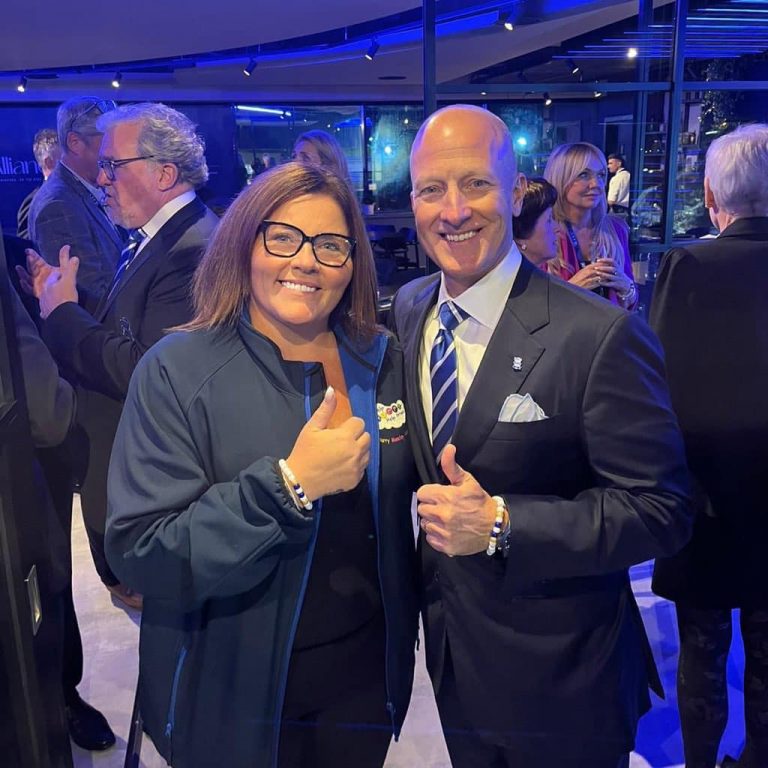
Georgina Moseley And Tom Wagner before the Birmingham City v Queens Park Rangers match.
Garry Cook is behind them to the left.

A specially made Help Harry Help Others bracelet for fans at the Birmingham City v Queens Park Rangers match.

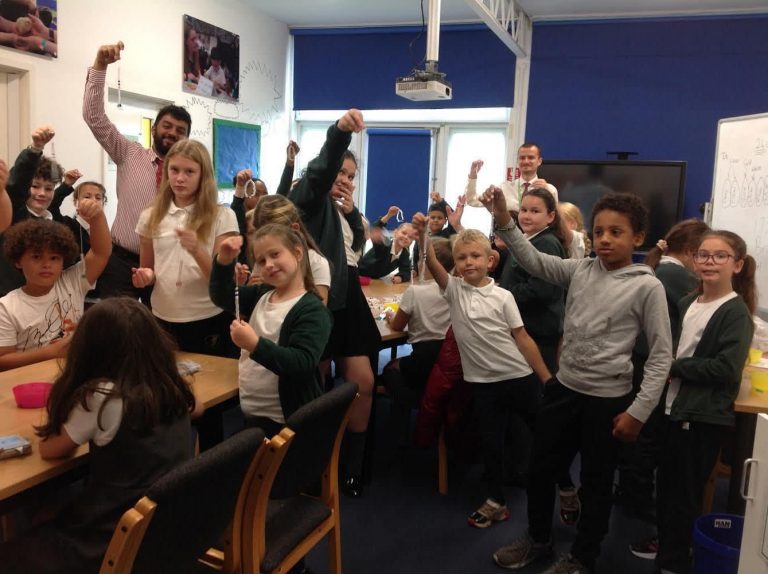

Georgina Moseley and the Help Harry Help Others team making limited-edition bracelets in time for the Birmingham City v Queens Park Rangers match.
Click here to see Georgina completing the 19,000th bracelet. These were made in just one week prior to the game. Well done to all involved.
Announcement Regarding Lower Tilton Re-Opening (1)
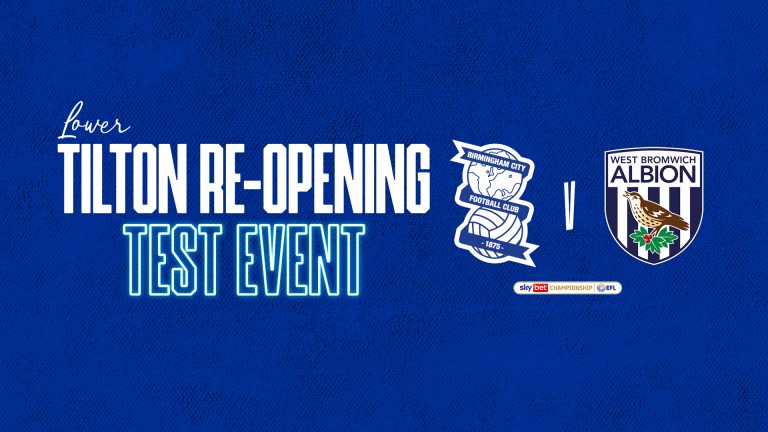
Lower Tilton announcement.
On the 29th of September, 2023, Blues made an announcement stating that the match against West Bromwich Albion on the 6th of October, 2023 would serve as the test event (in conjunction with the local authority and relevant stakeholders) for the Tilton Road lower stand prior to its official opening later in the month.
The atmosphere created by the Alliance of supporters in the Tilton has been infamous, and the Club are looking forward to once again hearing the noise created by the most iconic set of supporters in the country.
October 2023
Announcement Regarding Juninho Bacuna (1)
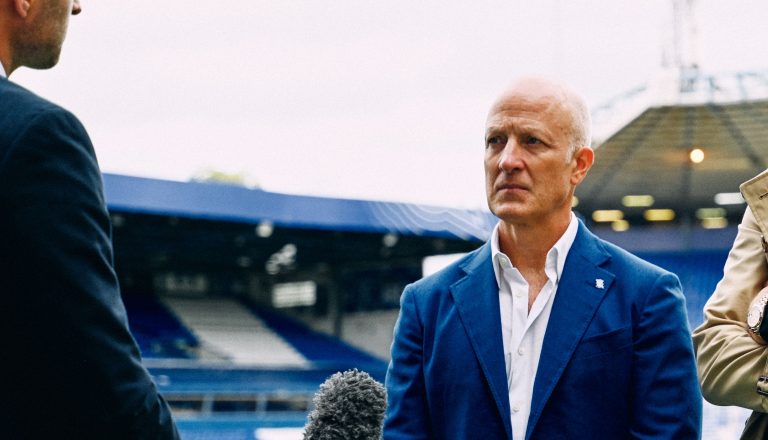
Bacuna announcement.
On the 4th of October, 2023, Tom Wagner made an announcement to Blues fans regarding the racial abuse incident involving Juninho Bacuna during Birmingham City’s match against Huddersfield Town on the 3rd of October, 2023. He rightly explained this is unacceptable and every action will be taken to find and ban the perpetrator.
Of course, this should not be allowed, in football, in any sport or in life, but what makes this worse is it came from one of our so-called “fans”.
We don’t want anyone like this supporting Blues and they deserve to be banned. As a club, we are on the rise again and we need to do this together, players and all, through the good times and the bad and anyone who can’t buy into that need to go and support someone else because we don’t need the negativity and bad press any more.
Announcement Regarding The Sacking Of John Eustace

Eustace sacked announcement.
On the 9th of October, 2023, Blues made an announcement to inform the fans that John Eustace had been sacked!
It was no surprise for me from what I was reading the night before. The club said they will announce a new manager in the next few days. It had been rumoured weeks prior to this that it would be Wayne Rooney and it certainly appears to be that way. It is no coincidence he quit his job in America recently and has strong connections with Garry Cook.
This is a bad decision that will possibly upset the camp and undo all the good work Eustace and co. have done since their arrival to bring the club and fans together and push on in the right direction, stronger as one solid unit. Eustace has done wonders for the club steadily since his arrival in July 2022.
Like watching the team at times he can be frustrating with his tactics but no proper Blues fan can argue with the fact that before today we have had two back-to-back wins, seven goals scored, unbeaten at home, are sixth in the Championship and that is down to the manager and the belief he has installed in the players and that as clearly shown on the pitch and in the results.
It would be nice to know the full story here because clearly, a lot has been going on behind the scenes. Had Eustace been approached by Rangers? Did he know for a while his job was on the line? No one would have blamed him for wanting to go if so.
When a new owner comes into a football club they usually want their own man for the job, and that’s understandable but not when you are eleven games into a new season and sitting in the top six and confidence amongst the players and fans is high. I just don’t understand the logic of it all. It leaves me feeling bewildered and angry because this incident is madness and so deja vue and the timing is all wrong.
Judging by the passion Eustace showed during Gary Gardner’s goal in his last game in charge in the 3 – 1 win over West Bromwich Albion at St. Andrews I find it hard to believe he would have wanted to go. He patted the badge more than once and this isn’t the first time he has shown such passion to the fans so this shock news must feel like a knife in his back.
Myself and a lot of loyal, true Blues fans wish John nothing but the very best in his next job and for his future. We thank him for everything he has done for the club, the players, the fans and the belief he instilled in us all. Good luck.

John Eustace passionately celebrates Blues 3 -1 win over West Bromwich Albion at St. Andrews on 06/10/2023.
I understand Wagner is a businessman first, a Blues supporter second, and he is here to make money and turn things around. That is what his company does, and that is why he purchased Birmingham City. There is no denying what he has done in such a short time is nothing but commendable, I accept that and I trust, and hope, he will continue to do what is right for the club but consider how the fans feel as well.
Despite whoever the owner and manager is, I support the badge and I will give the owners the benefit of the doubt. I will do the same with any manager that comes in, like I do with all new managers regardless of who they are and if I personally like them or not and see what happens after that. I just hope all this works out. If it does then great, it was a clever tactical move from Wagner and Cook, if not then they have to quickly get the fans back on board. We deserve nothing less than their honesty and transparency. Onwards and upwards we go but most importantly we have to do it TOGETHER.
A Letter To Supporters From Garry Cook -10/10/2023

Garry Cook.
On the 10th of October, 2023, Garry Cook wrote another letter to the fans, this time regarding the sacking of John Eustace. He also emphasised the positive progress work that has been achieved so far by Tom Wagner et al and that there is a lot more to come. You can read it here.
All this will take time and patience from the fans and as Cook says, “We cannot keep looking back and referring to what happened in the recent past, we must look forward. The future is bright and we are on the rise again.”
I totally agree. Despite my personal feelings about all this, the fact remains, Eustace has been sacked, Cook has spoken, it is what it is, time to move forward.
Announcement Regarding Matt Gardiner And Keith Downing

Matt Gardiner and Keith Downing announcement.
On the 10th of October, 2023, Blues made an announcement to inform the fans that assistant head coaches, Keith Downing and Matt Gardiner, have left Birmingham City.
It was only a matter of time.
Announcement Regarding New Manager Wayne Rooney
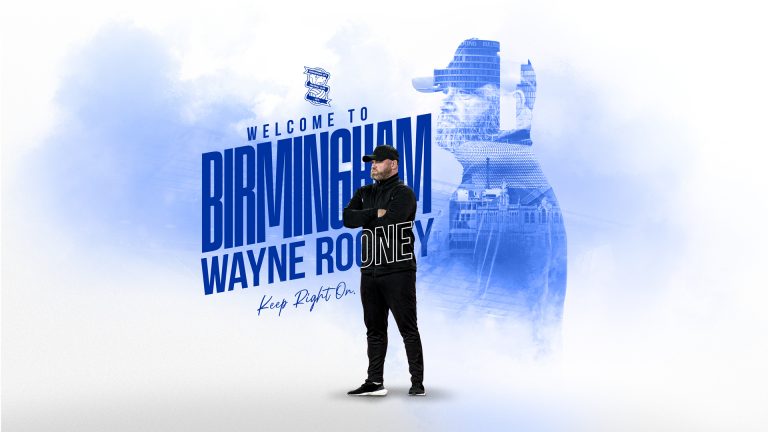
Wayne Rooney announcement.
On the 11th of October, 2023, Blues made an announcement to the fans that Wayne Rooney is our new manager and will be supported by Ashley Cole, John O’Shea, Carl Robinson and Pete Shuttleworth. Maik Taylor stays at the Club as Goalkeeper Coach. Click here to see what Rooney said to Blues TV in his first interview.
Personally, I have never been a fan of Rooney but the fact is he is our manager now and like I have said before I will always give any new manager the benefit of the doubt. Anyone who starts a new job will know it can take a few months at least to settle in and we have to expect the same of him and judge his efforts at the end of the season. As long as we finish in the top half then I will be happy. Then we will be in a much better position financially, thanks to the shrewd businessmen who run the club, to make a solid push for promotion next season.
I don’t normally comment on what other so-called fans say on social media sites etc. because we are all entitled to our opinions. However, before Rooney has even set through the doors of St. Andrews they are slagging him off and posting memes about him and his past. I can expect that from people who don’t support Blues (it is part and parcel of football banter) but from our own “fans” it is embarrassing and pathetic. They are even saying they will stop supporting the club well go then because quite frankly they need to piss off to B6 and support the vile. They are starting to sound like them and will fit in well there.
I don’t know the man so I can’t comment on his life or what he has supposed to have done or not done in the past, only going by what I have read or heard in the so-called media. It simply doesn’t matter and neither does his recent managerial positions. They are both completely different circumstances due to the situation Blues are in now and with the top backing from owners who actually have a clue what they are doing. What does matter is what he does from now on and how he represents Birmingham City and its proper fans. I am concentrating on where we go together from today and onwards.
Due to all the shit we have had to put up with over the years, it is understandable we feel doubtful when any change comes along but we need to put the bad things that have happened in the past behind us. All that does is breed toxicity amongst us all and we need to remove that and toxic fans. No one wants that in their life and we certainly don’t need it in our club.
As long as we finish in the top half then I will be happy. Then we will be in a much better position financially, thanks to the shrewd businessmen who run the club, to make a solid push for promotion next season.
Tom Wagner got the new era ball rolling by purchasing B.C.F.C. and giving us belief, John Eustace nurtured that belief and now Wayne Rooney must be given the chance to carry that belief on and better it if he can. I urge any decent-minded Blues fan to get behind Rooney, his staff and our owners moving forward and, dare I say, even feel excited about what great things can possibly happen next.
Patience is a virtue.
Wayne Rooney’s First Interview With Blues T.V.
Wayne Rooney speaks of his delight at being named as the new Birmingham City Manager.
On the 11th of October, 2023, the new Blues manager spoke to Blues T.V. for the first time.
Wayne Rooney’s First Training Session
On the 12th of October, 2023, Wayne Rooney took his first training session with the lads as the new Blues manager prior to his first press conference.
See the photo gallery here.
Wayne Rooney‘s first training session as the new Birmingham City manager.
Wayne Rooney’s First Press Conference
On the 12th of October, 2023, Garry Cook and new Blues Manager Wayne Rooney spoke to local and national media at St. Andrew’s in Rooney’s first press conference.
Garry Cook and new Blues Manager Wayne Rooney spoke to local and national media at St. Andrew’s in Rooney’s first press conference.
Despite not wanting John Eustace to leave the club (certainly not with the shocking way the club dismissed him), I must say that Rooney looks good in our colours, and after watching this, I am excited and intrigued to see what lies ahead for Blues under the new management of him and his backroom staff.
I have a feeling his appointment will not be as bad as everyone thinks. I, like many, had my doubts about him being appointed (but not in the pathetic, whiney way a lot of so-called fans have) and I would genuinely love him to do well for us. The ball is in Rooney and Co.’s court now to make that happen.
Our new era has just stepped up a level. The ultimate level is to get back into the Premiership and stay there for a very long time with success. This won’t happen overnight but when it does I think there are going to be spectacular times ahead for this club I love with a passion. Now that thought truly is exciting.


Wayne Rooney inside St. Andrew’s officially unveiled as Blues new manager.
Wayne Rooney’s First Week In Charge
Birmingham City manager, Wayne Rooney, discussed his first week at the club.
On the 19th of October, 2023, Wayne Rooney chatted with Blues T.V. about his first week in charge as the new Blues manager.
Carl Robinson’s First Interview With Blues T.V.
On the 19th of October, 2023, new men’s First Team coach, Carl Robinson, sat down with Blues T.V. for the first time to discuss his coaching style and how he’s found his first week at the club.
Ashley Cole’s First Interview With Blues T.V.
On the 19th of October, 2023, new men’s First Team coach, Ashley Cole, sits down with Blues T.V. for the first time to discuss his coaching style and how excited he is to be at Blues.
Announcement Regarding Lower Tilton Re-Opening (2)
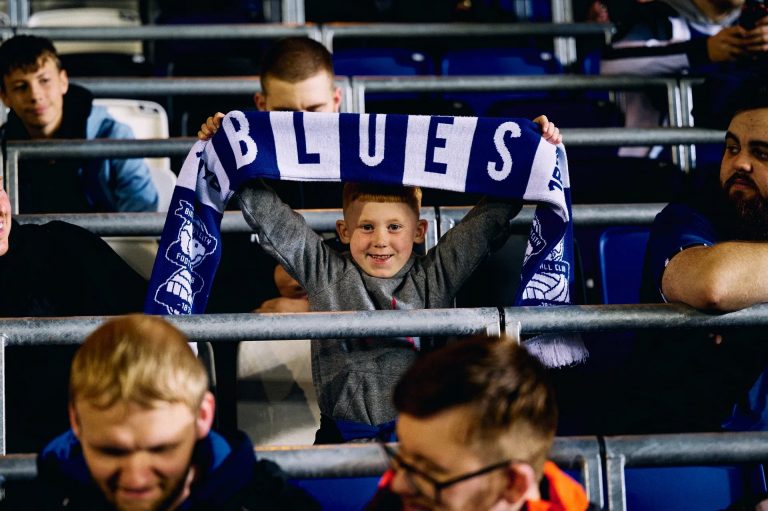
Another Lower Tilton announcement.
On the 24th of October, 2023, Blues announced that more blocks would be open in the Tilton Lower for the match against Hull City.
It’s good to see the repairs are coming on nicely.
Announcement Regarding Juninho Bacuna (2)

Another Bacuna announcement.
On the 25th of October, 2023, the club made an announcement to Blues fans regarding the racial abuse incident involving Juninho Bacuna during Birmingham City’s match against Huddersfield Town on the 3rd of October, 2023. Bacuna reported an incident of racism during the second half.
A man was arrested during Blues’ game against Hull City on the 25th of October, 2023. Police identified a 52-year-old male who was wanted for questioning.
He was apprehended shortly after kick-off on suspicion of a racially aggravated public order offence and was kept in custody for questioning.
Let’s hope he is dealt with accordingly and banned for life and this sort of thing doesn’t happen again at St. Andrews. Sadly in the uncivilised world we live it is doubtful.
November 2023
Announcement Regarding New Fan Initiatives
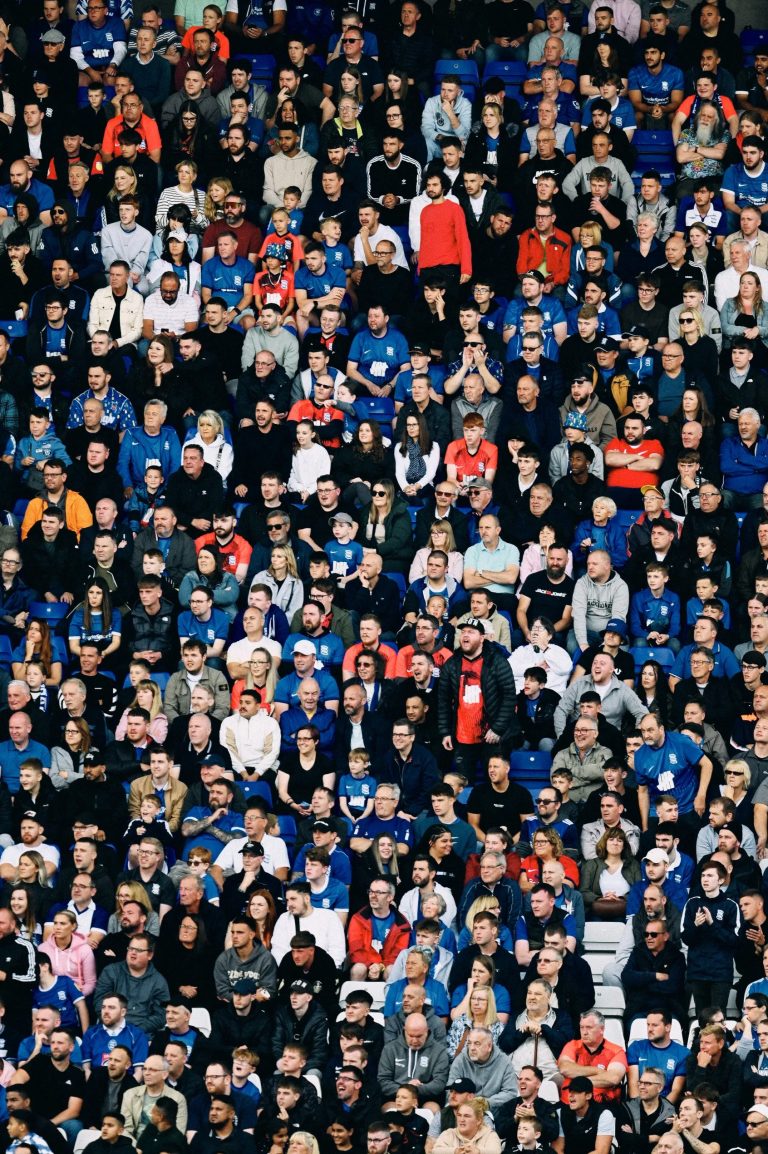
Announcement regarding new fan initiatives.
On the 1st of November, 2023, the club made an announcement to Blues fans regarding a series of fan initiatives.
As mentioned above in May, Tom Wagner sent a Letter to Fans outlining six Commitments that he asked fans to hold the leadership of the Club accountable.
After consultation with fans and fan groups, Blues revealed three new initiatives which deliver on the intent of Wagner’s commitment.
Firstly is Blues Open House, a quarterly open evening for up to 100 fans who are committed to Blues and whose work helps shape the views of Blue Noses across the globe. It will be by invitation only and the invite list could change each quarter. The first one of these will take place at St. Andrew’s on Tuesday the 21st of November, 2023, hosted by Garry Cook, and members of the leadership team.
Secondly, Blues Matters, an official Fan Engagement Programme that will be launched in January 2024. This will be the official constructive communication channel between the Club and fans.
Thirdly, Blues Official Supporters Club, will be launched in January 2024 as well. This is the recreation of the Official Supporters Club after many years, joining organisations across the country and globe in one new digital and physical home.
It is so refreshing that fans are made to feel an important part of the club and not just a revenue service.
Announcement Regarding Blues Open House
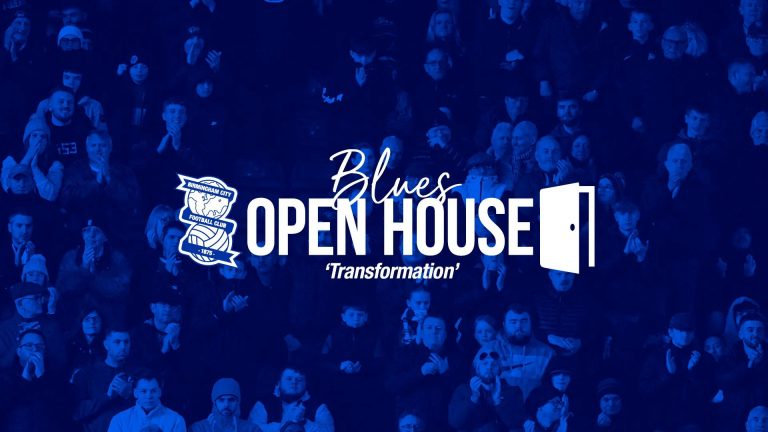
Open House announcement.
On the 8th of November, 2023, the club announced the Blues Open House date would be changed.
Blues Pay Their Respects Before Remembrance Day 2023
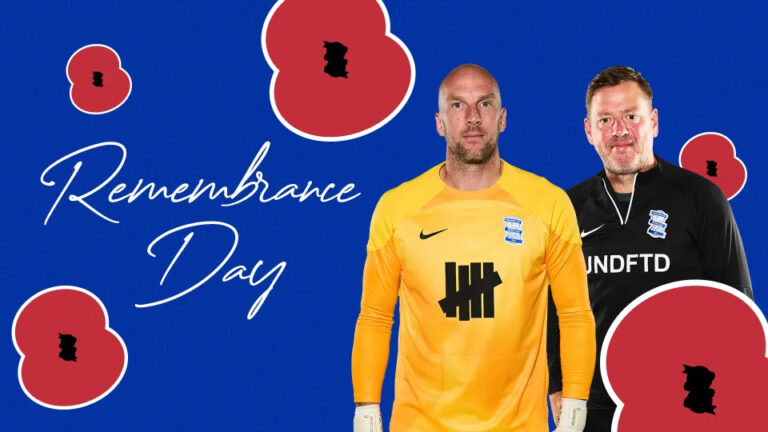
John Ruddy and Sean rush discuss Remembrance Day.
Read more here.
On the 3rd of November, 2023, John Ruddy, whose father served in the military as well as two of his best friends, and Sean Rush, whose son is currently serving in Iraq, sit down to discuss their loved ones’ experiences and the importance of Remembrance Day.

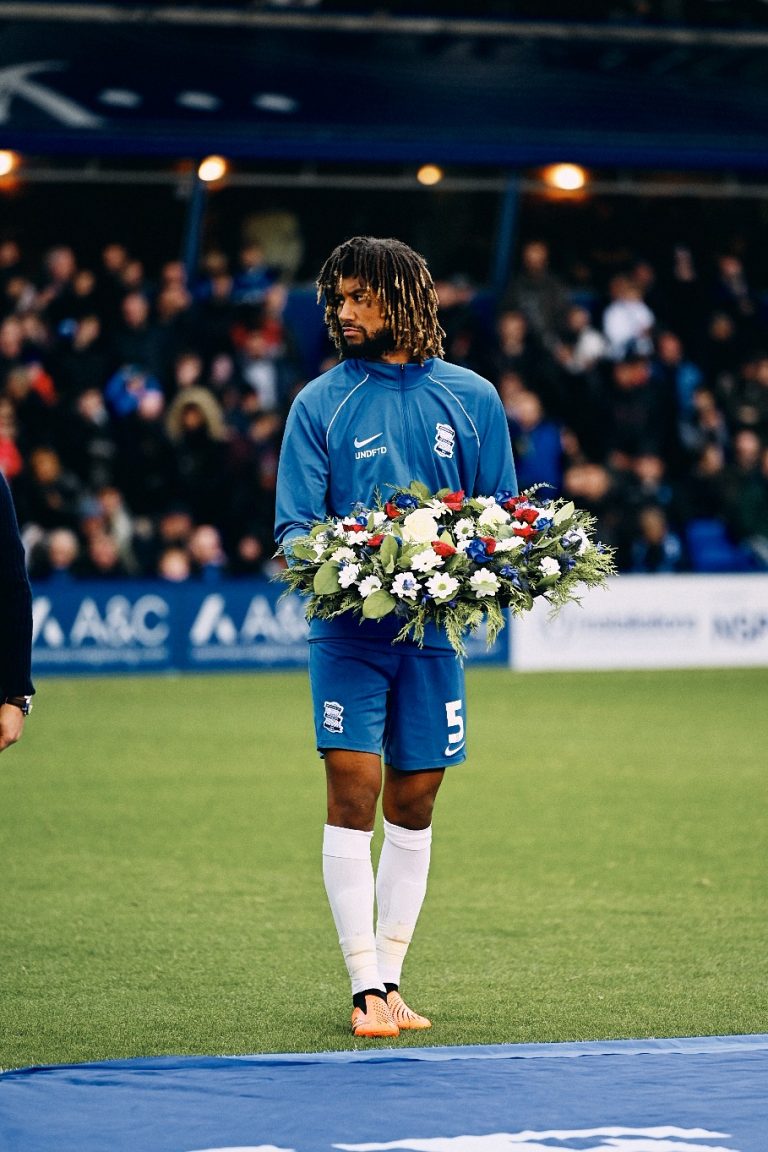





Blues pay their respects before Remembrance Day 2023 at St. Andrews.
The above photos were taken before their match against Ipswich Town on the 4th of November, 2023. Click here to see a short video regarding the above including the minute silence and the last post..
Announcement Regarding Kop Lower Re-Opening (1)
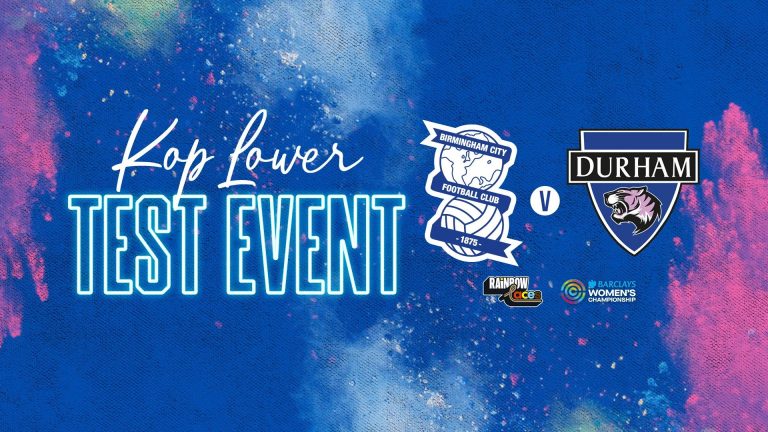
Kop Lower Announcement.
On the 15th of November, 2023, Blues made an announcement stating that Blues Women’s match against Durham on Sunday the 19th of November, 2023 will serve as a test event for the planned re-opening of the Kop Lower.
Tom Wagner is on track to keep his promise of having the Lower Tilton And Kop Lower open by the end of November., how refreshing is that, to have owners who are truthful!
Announcement Regarding Kop Lower Re-Opening (2)

Another Kop Lower Announcement.
On the 22nd of November, 2023, Blues made an announcement that Blues fans much-anticipated return to the Kop Lower will be against Sheffield Wednesday on the 25th of November, 2023.
Announcement Regarding Blues Open House: Transformation
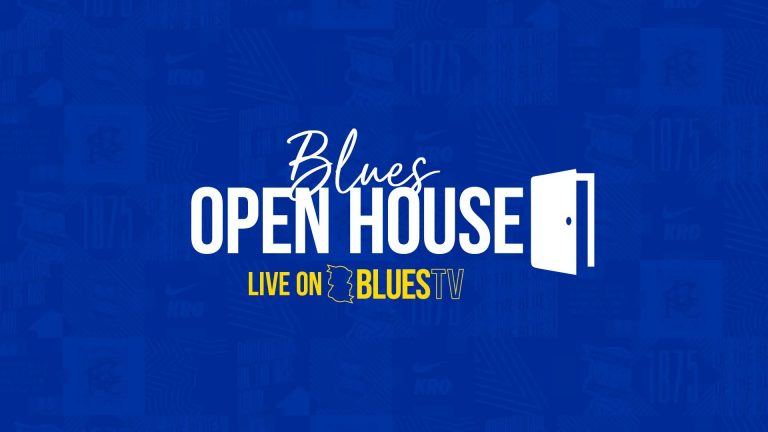
Blues Open House live on Blues TV announcement.
On the 27th of November, 2023, Blues announced that supporters will be able to watch live coverage of the first Blues Open House known as Transformation.
The introduction started with an EXCELLENT short video that made me proud to be a Blue Nose. It is emotional and underlines why I have supported this club since the 70’s and will do so until the day my time is up.
True fans need to Keep Right On TOGETHER. As it says on a t-shirt I have, “It’s more than just a badge, it’s our family emblem”.
You can watch the video here and in the video below.
Blues Open House: Transformation – Introduction and Q & A.
Hosted by Tom Ross.
Announcement Regarding Beau And Belle Brummie’s Makeover
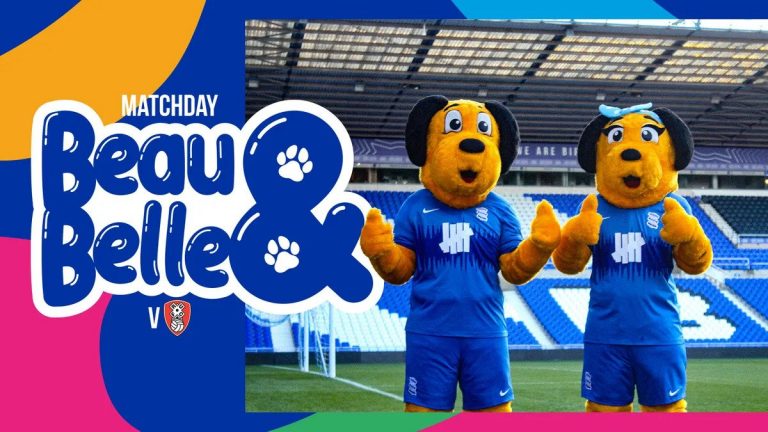
Beau and Belle Brummie makeover annoucement.
On the 30th of November, 2023, Blues announced that ahead of Blues’ game against Rotherham United on the 2nd of December, 2023, everyone’s favourite bulldogs have had a makeover and they will be taking over on matchday.
I can understand Tom Wagner and Co. wanting to move the club forward and make revenue (for it is that that will help get things done) but I have to disagree on this one. If it ain’t broke don’t fix it. I prefer the old traditional look and not something that looks like it came out of a sex shop!
December 2023
On the 27th of November, 2023, Blues announced that supporters will be able to watch live coverage of the first Blues Open House known as Transformation.
The introduction started with an EXCELLENT short video that made me proud to be a Blue Nose. It is emotional and underlines why I have supported this club since the 70’s and will do so until the day my time is up.
True fans need to Keep Right On TOGETHER. As it says on a t-shirt I have, “It’s more than just a badge, it’s our family emblem”.
You can watch the video here and in the video below.
Tom Wagner, Garry Cook And Tom Brady Attend Birmingham City Versus Rotherham United
Before the game against Rotherham United on December the 2nd, 2023, attended by Tom Wagner and Garry Cook, Tom Brady visited the Birmingham City Elite Performance and Innovation Centre as Blues prepared for the visitors. You can see a short video here.
Announcement Regarding Birmingham City Foundation

Birmingham City Foundation announcement.
On the 6th of December, 2023, Blues announced its first flagship partnership as Balaam Wood Academy became the inaugural Academy School.
The school in Frankley has long-standing links with the Club, with coaches currently operating in the school to deliver four hours of football and mentoring per week.
Tom Wagner talks about it here in a short video.
It is great to see Blues giving back to the local community and the city of Birmingham in this way It produces great bonds with prospective investors and most of all the fans, old and new.
January 2024
Announcement Regarding The Sacking Of Wayne Rooney

Rooney sacked announcement.
On the 2nd of January, 2024, Blues made an announcement to inform the fans that manager Wayne Rooney had been sacked. Carl Robinson left the club with him. Professional Development Coach Steve Spooner will assume responsibility for Men’s First Team matters as a caretaker manager until the manager’s position is filled again. The remaining coaching staff will be required to continue with their duties to assist Spooner.
As with any new manager, I gave him the benefit of the doubt and a chance to prove himself. Rooney simply was not good enough.
In the fifteen games played under Rooney’s management, Blues only secured two wins, four draws and nine defeats. His 13% win rate is down from his 28.5% managerial career win rate at previous clubs DC United and Derby County. Birmingham went from averaging 1.24 points per game under Eustace to 0.67 points per game under Rooney. As much as I have never really liked Rooney, he was a great player but great players do not always make great managers. He has proven this, more than once. I understand the players have to take responsibility for their part in the recent bad form while playing for Rooney but it’s the manager’s job to motivate his players, Rooney did not do this at all. He looked like he didn’t want to be there, he wasn’t expressive in his emotions and made it clear he didn’t like his players much. He couldn’t be bothered to wear the club badge or club colours and he alienated the fans from day one.
It was the wrong decision in the first place to employ him as was getting rid of our previous manager John Eustace but, like in that situation, you have to move on. The club’s number one priority is to avoid relegation and build in the summer with a new manager who knows what he’s doing and shows passion for the club and its fans, you know like Eustace did!
It’s not all doom and gloom. We have decent owners, albeit they made a mistake employing Rooney but soon realised this and rectified it before things got worse. You can argue not soon enough but it’s done now. Things are improving with the ground and off the pitch and things will improve on it eventually.
I won’t wish Rooney good luck, but rather GOOD RIDDANCE!
Announcement Regarding New Manager Tony Mowbray
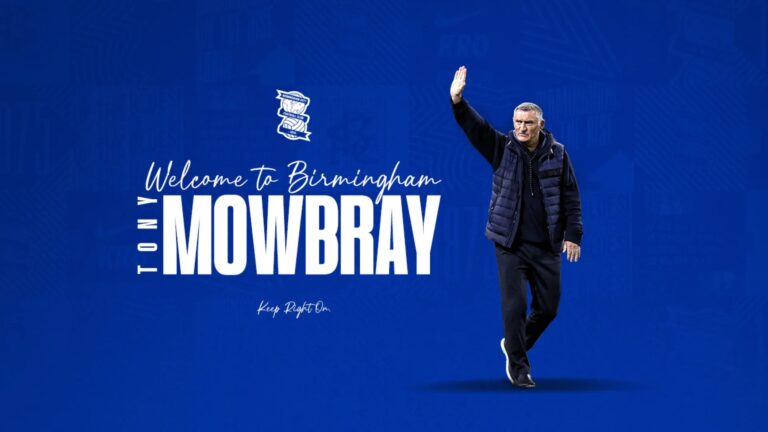
Mowbray announcement.
On the 8th of January, 2024, Blues announced to the fans that Tony Mowbray is our new manager. He will be joined by his long-time assistant Mark Venus who joins in the position of Assistant Manager.
I don’t have any doubts as I did with Wayne Rooney because Mowbray has a good track record of being an experienced Championship manager. He is someone who delivers results, likes to play attractive football, gives young players a chance and players want to play for him. Our fans couldn’t ask for anything more than that
Welcome to Blues Tony. It’s now time to get back on track and move forward once again and, like any new manager for us, I will wish you well.
Tony Mowbray’s First Interview With Blues T.V.
New Blues Manager, Tony Mowbray sits down with Blues T.V. to discuss a range of topics.
On the 9th of January, 2024, the new Blues manager spoke to Blues T.V. for the first time.
A good and straightforward to-the-point interview from a man who, unlike Rooney knows what he wants and how to achieve it the right way.
Tony Mowbray’s First Press Conference
Mowbray’s first press conference ahead of the Birmingham City v Swansea City match.
On the 11th of January, 2024, First Team Manager, Tony Mowbray, spoke to the media for the first time following his appointment on Monday. the 8th of January, 2024 and it is simply brilliant.
This time there was no razzamatazz from Garry Cook showing his friend off like a prize trophy because it wasn’t needed. What we got instead was an honest man with good morals, passion and knowledge of the game. He is someone who is liked and respected by everyone in his company as clearly can be seen in this press conference.
It has given me hope again and I have no doubt, that as long as the board support his wants and needs and doesn’t expect too much-attacking football, too soon this time, we have a manager who will motivate our players, play to their strengths once again and lead the club into successful times ahead next season and onwards.
Announcement Regarding Ian Dutton

Dutton announcement.
On the 12th of January, 2024, Blues announced to the fans that after 17 years of loyal and dedicated service, Ian Dutton has decided to leave Birmingham City.
Thank you for your service Ian and good luck on your next venture.
Announcement Regarding Birmingham City Partnering With Oak View Group

Birmingham City partners with Oak View Group announcement.
On the 12th of January, 2024, Blues made an announcement to inform the fans that they have entered into a multi-year partnership with leading global sports and entertainment company, Oak View Group (O.V.G.) Europe Ltd.
Under the terms of the agreement, O.V.G. will work with the Club to develop a long-term strategy to maximise the commercial value of St. Andrew’s and the Club’s training grounds.
Garry Cook, said: “O.V.G. has a track record that is second to none, especially in maximising naming rights and ancillary benefits for existing stadiums and new builds. This will be a significant asset for Blues. Revenues generated by O.V.G. will be invested directly back into the Club, supporting our drive to become world-class across everything that we do.”
This shows how serious our new owners are in making Birmingham City a global success on and off the pitch. Things are certainly looking up for Blues and eventually, with patience, everything will click into place and we will be a club to be reckoned with back in the Premiership, where we belong.
Announcement Regarding John O’Shea

O’Shea announcement.
On the 13th of January, 2024, Blues announced to the fans that John O’Shea had left by mutual consent.
Bye-bye, don’t let the door hit you on your arse on the way out.
Announcement Regarding Blues Matters
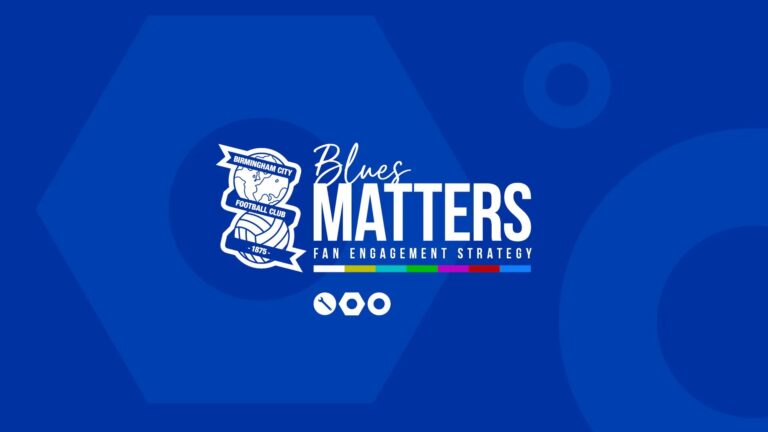
Blues Matters announcement.
On the 25th of January, 2024, Blues announced to the fans that the next phase of Birmingham City’s fan engagement strategy, Blues Matters, is set to launch this month, bringing supporters together and giving them a voice on the most important off-the-pitch strategic issues.
Blues Matters will be made up of five strategic work groups that will meet throughout the year, each focusing on a specific area of the Club:
Birmingham City Women’s Football Club.
Equality, Diversity, and Inclusion.
Heritage and History.
Men’s Matchday Experience.
South Asian Community Engagement.
It is great that the owners are involving the fans more and considering what we feel and think. Owners, players etc. come and go but true fans will always be here through the good times and bad and we deserve to be respected more because we are the foundation of the club.
Well done Tom Wagner and co. and thank you for recognising that we do indeed matter a lot. You keep doing your bit and we will keep doing ours and together we will achieve great things together.
Announcement Regarding Birmingham City Naming Rights Partnership With Knighthead

Birmingham City naming rights with Knighthead announcement.
On the 26th of January, 2024, Blues made an announcement to inform the fans that they have entered into a multi-million pound, multi-year naming rights agreement with Shelby Companies Limited, which is majority-owned by Knighthead and certain other minority investors, including seven-time Super Bowl champion and entrepreneur, Tom Brady. It is the largest commercial agreement in the Club’s history.
Under the terms of the deal, the Club’s stadium will be re-named St. Andrew’s @ Knighthead Park. The Club’s Wast Hills training ground will be renamed The Knighthead Training and Academy Grounds and a new fan entertainment zone @ Knighthead Park, will be built, situated on Club-owned land close to the Tilton and Main Stand at the Stadium. These will be launched before the end of the 2023/24 Season.
The value of the agreement is based on an annual sponsorship fee, a Men’s First Team performance-related bonus and a club-wide social media performance-related bonus. For the remainder of the 2023/24 season, the value to the Club with incentives could reach £6,241,666.67. In 2024/25, the first full year of the partnership, the value to Birmingham City, with incentives, could reach £9,450,000. Further information is available here.
Knighthead Park is the first step in the Club’s plan to build a Sports Quarter in the heart of Birmingham. The ambition for the Sports Quarter is to create a globally recognisable sporting and entertainment location. A beacon of excellence, providing the world’s greatest athletes and performers a platform to showcase their talents. Recreational, mixed-use and other spaces will be developed for the enjoyment and benefit of the local community.
The official launch for this will be at St. Andrew’s @ Knighthead Park on Monday the 1st of April, 2024.
The vast amount of revenue predicted will go a long way to balancing the books and staying well within F.F.P. and it gives Tony Mowbray the cash to build a much stronger team to battle for the Premiership. Then, when we eventually get promoted, a new ground will follow and the sky is the limit for Birmingham City.
There are very exciting times ahead for Blues, that’s for sure, and I, for one, can’t wait.
Announcement Regarding Blues New Official Supporter’s Club For Disabled Supporters (1)

Blues new Official Supporter’s Club for disabled supporters announcement.
On the 29th of January, 2024, Blues announced to the fans that as part of the Club’s plan to create an Official Supporter’s Club (O.S.C.), it has been engaging with the two existing independent disabled supporter groups, AccessiBlues and the Birmingham City Disabled Supporters Association (B.C.D.S.A.).
The goal of the Club and the O.S.C. is to have a single unified branch that represents the disabled supporters, ensures that they receive the highest levels of support and creates a welcoming atmosphere for its members.
Nice one Blues.
A Message To Supporters From Tom Wagner – 31/01/2024
Wagner’s motivational message to all Blue Noses.
On the 31st of January, 2024, the Chairman of the Board, Tom Wagner, sent a message to Blues supporters regarding five new initiatives to sell out the match against Sunderland.
In this very motivational message, he talked about how much he enjoys spending time with Blues supporters.
He revealed that he wants the home game at St. Andrew’s @ Knighthead Park to be a sell-out, something that has not been achieved for nearly four years.
The Club have launched five initiatives to make this big game even bigger. They are:
(1) Category B.
The game is now Category B, instead of Category A. This makes it more affordable and accessible, with tickets now starting at £30.
(2) Celebrate Birmingham Industry Day.
By working with big local employers, essential services, and local universities Blues has created partnership packages that enable them to offer their employees and students Blues tickets for the hosting of Sunderland at a reduced price.
(3) Platinum and Gold.
The Club are giving the Gift of Blues to Platinum and Gold Members who travel 1,000s of miles each season to cheer on the team. These fans can buy up to two tickets for family and friends at £10 for an adult and £3 for a child.
(4) Tickets 4 Teams.
Blues want to bring young football-crazy kids back to St. Andrew’s @ Knighthead Park
(5) 1,000 free tickets for children’s charities and schools.
Working with charities and schools across Birmingham, the Club is making tickets available for those children who would not normally be able to come to a game.
This is all fantastic news from the club and stuff we could have only ever dreamed of under the previous, useless owners so let’s give him what he asks for and sell all our tickets for the Sunderland game and fill St. Andrew’s with wonderous loud noise.
When Wagner speaks you can’t help but want to listen to his passionate words which are genuinely from the heart. Has a businessman he wants to make a profit, that is undisputable, that is why he brought Birmingham City for, but he truly wants the very best for the club and the fans and you can hear that in his voice and see that in his eyes. He truly is a man of integrity and we are very fortunate to have him.
February 2024
Announcement Regarding Juninho Bacuna (3)
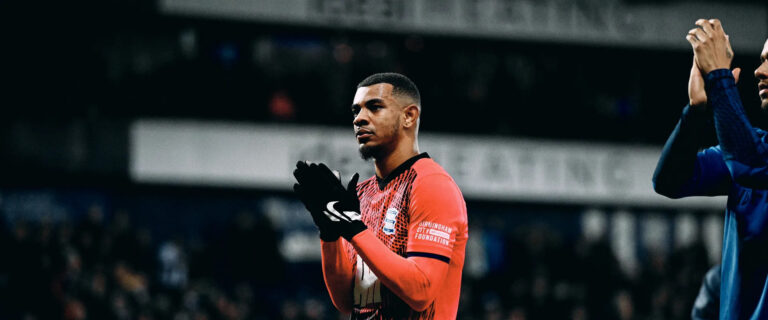
Another Bacuna announcement.
On the 3rd of February, 2024, the club made an announcement to Blues fans regarding an incident that happened in the second half of the game versus West Bromwich Albion at the Hawthorns. Bacuna reported an incident of racism to the referee, David Webb. It was included in the official’s match report and the Club said it would deal with it accordingly.
This isn’t the first time Bacuna has been on the end of racial abuse and it is disgraceful. May the perpetrator be found, charged and banned from football for life a.s.a.p.
Announcement Regarding Blues New Official Supporter’s Club For Disabled Supporters (2)

Another announcement regarding Blues new Official Supporter’s Club for disabled supporters.
On the 6th of February, 2024, Blues announced to the fans an update about the launch of the Official Supporters Club, a key part of the new fan engagement strategy.
Following the recent application period, the Club revealed that there were 62 successful applications, including 15 from overseas.
The Official Supporters’ Clubs is aimed at uniting supporters, creating communities of Blue Noses across the globe and rewarding fans for their loyalty. Branches are predominantly based on geographical locations, meaning supporters across the region and beyond can connect, socialise, travel and watch games together. Membership for every Branch opened at the end of February and will be free of charge for the remainder of the 2023/24 season.
Announcement Regarding Juninho Bacuna (4)

Another Bacuna announcement.
On the 7th of February, 2024, the club made an announcement to Blues fans regarding West Midlands Police who arrested a man on suspicion of racially abusing Bacuna because of an incident that happened in the second half of the game versus West Bromwich Albion at the Hawthorns.
Witnesses were told to contact the West Midlands Police by clicking here or by calling 101 to help them with their inquiries.
Hopefully, this will be over with quickly and the moron involved gets what he deserves.
Announcement Regarding Tony Mowbray Requiring Medical Treatment

Tony Mowbray requires medical treatment announcement.
On the 19th of February, 2024, the club made an announcement to Blues fans regarding Manager Tony Mowbray requiring medical treatment which meant that he would be temporarily stepping away from the on-site management of the Club for a period of approximately six to eight weeks.
Assistant Manager, Mark Venus will assume temporary responsibility for the team with immediate effect. along with Ashley Cole, Pete Shuttleworth and Maik Taylor.
Get well soon Tony.
Announcement Regarding UB40 Concert At St. Andrew’s @ Knighthead Park

UB40 Concert at St. Andrew’s @ Knighthead Park announcement.
On the 28th of February, 2024, the club made an announcement to Blues fans regarding the UB40 Concert at St. Andrew’s @ Knighthead Park on Monday the 1st of April, 2024. Blues have joined forces with UB40 to present the World Premiere of the band’s new album UB45. It is part of the official launch of the Club’s naming rights partnership, St. Andrew’s @ Knighthead Park. The Club will unveil new St. Andrew’s @ Knighthead Park stadium branding at the event.
It will be UB40’s kick-off concert for their extensive 2024 World Tour.
The concert is part of an Easter Monday Double Header with the match versus Preston North End, kick-off at 3 pm. The UB40 concert is included in the price of the ticket for the match.
This will start at 5.45 pm and last one hour. Supporters can expect to hear the much-loved classic hits and a sprinkling of new material from the upcoming UB45 album on a pre-built stage behind the goal in the Gil Merrick Lower.
The concert is in partnership with Greatest Hits Radio, the country’s most-listened-to commercial radio station, and will be hosted by presenter Jenny Powell.
Personally, this isn’t UB40 to me. The sound of UB40 will always be Ali Campbell as the lead singer. I appreciate bands changing, and members replacing others over time but when Ali left UB40 with Astro it never was the same again. Sadly, due to silly family arguments, there was never any chance of the original lineup getting back together again, especially as Mickey Virtue passed away in 2008 and Astro and Brian Travers passed away in 2021. Ali does his own thing, as does his brother Robin and they both use the name UB40. We are all entitled to opinions of which version we like of the band best and mine is the one when they were all together, the one that I grew up with and enjoyed in the 70’s and 80’s and brought out their best music up until the 90’s.
No one should be moaning about the FREE concert being provided here, especially the ones going to the Preston match. They all can have opinions, of course, but moan, most definitely not. Those attending can choose to stay after the match to watch it or leave but regardless of who likes who, what and why, Tom Wagner has to be commended for finding initiative ways of bringing important revenue to Birmingham City that will help build the club to bigger things and benefit all of its supporters in the long run. For that, I say well done Tom, keep up the great work.
March 2024
Announcement Regarding The Second Blues Open House In April
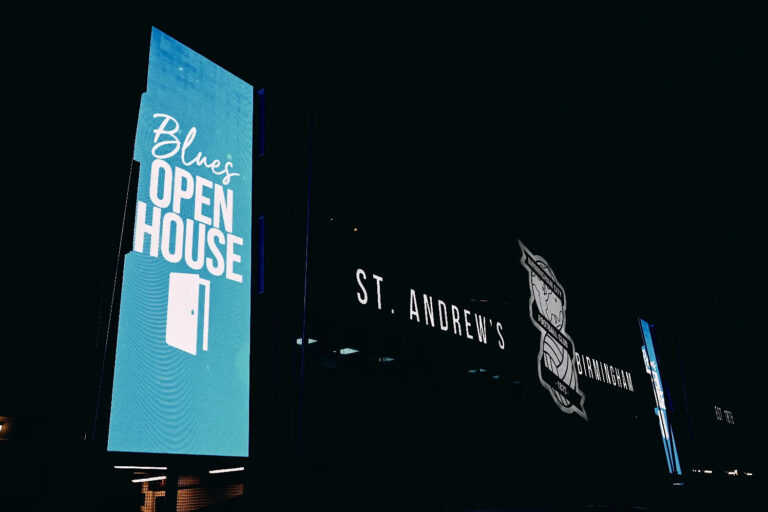
The Second Blues Open House in April announcement.
On the 8th of March, 2024, the club made an announcement to Blues fans regarding the details for the second Blues Open House on Tuesday the 9th of April, 2024, hosted by Garry Cook, who will be joined in-person by Tom Wagner, and other members of the Club’s Leadership Team. The theme of the evening is Ambition.
The primary focus will be on two areas:
(1) Infrastructure.
(2) Fan experience.
Announcement Regarding Tony Mowbray’s Medical Leave And Gary Rowett’s Return As Interim Manager

Tony Mowbray’s medical leave and Gary Rowett’s return as Interim Manager announcement.
On the 19th of March, 2024, the club made an announcement to Blues fans regarding Tony Mowbray’s medical leave and Gary Rowett’s return as Interim Manager.
Mowbray will take a formal medical leave of absence until the start of pre-season 2024/25.
The Club appointed Interim Manager, Gary Rowett, with immediate effect for the remaining eight games of the season.
Assistant Manager, Mark Venus, will also take a leave of absence with immediate effect and rejoin the Club at the same time as Mowbray. First Team Coaches, Ashley Cole and Peter Shuttleworth, and Goalkeeper Coach, Maik Taylor, will remain at the Club as part of Rowett’s coaching staff.
Once again I say to Tony get well soon and here’s to a speedy recovery for him and thank you to Mark for his efforts in trying his best to get results for Blues to push them further up the table, unfortunately, that wasn’t too be with only one point out of six matches in charge.
Here is what I wrote regarding our recent form in the Championship. I said then it was a bad idea to get a manager in to replace Mowbray if he didn’t return for the Q.P.R. game. We now know that isn’t going to happen and, no disrespect to Venus, he isn’t up to the task of managing the team. That wasn’t all his fault though and the players need to have a good hard stare at themselves in the mirror and see that most of them are not good enough for this club unless they give 100% every match. They only need to look at Lukas Jutkiewicz for inspiration. With all this in mind, hiring Rowett is a wise decision by Tom Wagner.
As a former Blues player and manager, Rowett knows the club well. He took over in October 2014 when we were struggling following an embarrassing defeat to Bournemouth at home when we lost 8-0. In just five games in charge under Rowett Blues looked like a completely different team gaining eleven points from fifteen. It would be amazing to have a similar outcome in the remaining eight games he is in charge. Will it happen? Time will tell.
Good luck Gary.
Gary Rowett’s First Interview With Blues T.V. As Interim Manager
Blues Interim Manager, Gary Rowett joins Blues T.V. to discuss his return to the Club.
On the 20th of March, 2024, Blues interim manager spoke to Blues T.V. for the first time on his return to Birmingham City.
This a good interview from a man who knows the club well and shares the passion of its fans.
Announcement Regarding Gary Rowett’s Backroom Staff

Gary Rowett’s backroom staff announcement.
On the 20th of March, 2024, the club made an announcement to Blues fans regarding Interim Manager Gary Rowett’s backroom staff.
Birmingham City confirmed two additions to Rowett’s staff which includes First Team Coaches, Ashley Cole and Peter Shuttleworth, and Goalkeeper Coach, Maik Taylor.
Rowett will be joined by Paul Robinson and Dave Carolan for the eight remaining games of the 2023/24 season. Both assisted Rowett at Millwall and previously worked at Blues.
It is good to have them back, especially former Club Captain Robinson who gave everything in his time at Blues, much like Lukas Jutkiewicz does now. These are proper players who play with pride for the badge on their football tops, their club and its fans.
Good luck Paul and Dave.
Paul Robinson And Dave Carolan’s First Interview With Blues T.V. Since Returning To Birmingham City
First Team Technical Coaches, Paul Robinson and Dave Carolan sit down with Blues T.V. to discuss returning to the Club under Interim Manager, Gary Rowett’s stewardship.
April 2024
Announcement Regarding Blues Open House: Ambition
Blues Open House live on Blues TV announcement.
On the 8th of April, 2023, Blues announced that supporters will be able to watch live coverage of the second Blues Open House known as Ambition.
You can watch it all in full in the video below of this exciting look at the future of Birmingham City under Knighthead and I for one can’t wait to see it all come to fruition.
Announcement Regarding Knighthead Acquiring 48-Acre Former Wheels Site

Knighthead acquiring 48-acre former Wheels site announcement.
On the 9th of April, 2024, the club made an announcement to Blues fans regarding Knighthead’s acquisition of the 48-acre former Wheels site in Bordesley Park, East Birmingham, bringing their total land holding to more than 60 acres, excluding St. Andrew’s @ Knighthead Park.
This is a key step toward creating a vibrant Sports Quarter and a new world-class stadium as follows:
(1) Knighthead’s ambition for Birmingham City Football Club is to become a beacon of excellence for Birmingham on the global stage, boosted by the new Sports Quarter infrastructure plans
(2) Sports Quarter to be home to world-class stadium and training facilities for all Birmingham City teams, and extensive commercial and community facilities
(3) The development of the Sports Quarter is expected to generate over 3,000 local jobs
(4) Knighthead’s investment into the Sports Quarter follows the company’s takeover of the Football Club and further showcases the company’s continued commitment and ambitions for the city of Birmingham
(5) The plans have been led by Knighthead Co-CEO and Birmingham City Chairman, Tom Wagner, and Chief Executive Officer, Garry Cook.
The Sports Quarter intends to build a new multi-use stadium, high-performance training facilities and other mixed-use real estate development including a range of entertainment options. This is to be the new home of Birmingham City Football Club, and a world-class venue to bring international sporting events to the region. The news represents a significant step on the Club’s growth journey following the takeover by Knighthead in July 2023.
Birmingham City sits at the heart of the community in Birmingham through its activity on the pitch and the important work of the Birmingham City Foundation. The regeneration of Bordesley Green and the planned facilities for local people are central to the owners’ ambition to make a positive contribution to people from all backgrounds across the city.
The ambition for the Sports Quarter is for it to become a globally recognisable sporting and entertainment location. The goal is for Blues to have a world-class stadium, training facilities for both men and women, a new academy, community pitches and commercial space to support innovative local businesses, all within walking distance to the city centre.
The plans will not only help realise the vision for the Football Club but also deliver for East Birmingham as part of Knighthead’s plan to play a significant role in the ongoing transformation of Birmingham’s infrastructure and skyline. Once operational, the Sports Quarter should generate over 3,000 full-time jobs and significantly contribute to Birmingham’s G.D.P.
This has been mentioned in the media and on social media recently but I didn’t want to comment on it until it was official and that time is now.
It is such a joy to see ambition from owners who know what they are doing and truly care for the club and its fans. There are exciting years ahead to come for Blues fans and I, for one, can’t wait to see all this come to fruition.
Blues Remember The Victims Of The Birmingham Pub Bombings

Blues remember the victims of the Birmingham Pub Bombings.
On the 23rd of April, 2024, Blues installed a lasting memorial to the 21 victims of the Birmingham Pub Bombings who sadly lost their lives on Thursday, the 21st of November, 1974.
They installed a plaque on the facade of the Kop at St. Andrew’s and it continues to show what a brilliant understanding club this is for the people of Birmingham.

Birmingham Pub Bombings memorial plaque at St. Andrews.
2023/24 Season Academy Awards

Blues Academy Awards 2024.
On the 26th of April, 2024, Blues held their annual academy awards. The players and their coaches were joined by Members of the Club’s Leadership Team, hearing from Blues’ Chief Executive Officer, Garry Cook, Academy Manager (Football), Liam Daish, and Academy Manager (Operations), Louisa Collis.
As well as the awards ceremony, guests were treated to video highlights from the season and a football freestyle performance.
The winners were:
Under-9s Players’ Player of the Season: Jackson Coombes.
Under-10s Players’ Player of the Season: Willo Vanriel-Williams.
Under-11s Players’ Player of the Season: Thomas Breese.
Under-12s Players’ Player of the Season: Prince Tchappi.
Under-13s Players’ Player of the Season: Finley Taylor.
Under-14s Players’ Player of the Season: Liam Taylor.
Under-15s Players’ Player of the Season: Fraser Hamilton-Wright.
Under-16s Players’ Player of the Season: Tobe Ugorji.
Under-9s Goal of the Season: Jack Johnson-Guy.
Under-10s Goal of the Season: Didaar Bening.
Under-11s Goal of the Season: Carlos English.
Under-12s Goal of the Season: Jude Kyei.
Under-13s Goal of the Season: Thomas Caves.
Under-14s Goal of the Season: Charlie Bayton-Timms.
Under-15s Goal of the Season: Jayden Nunes-Wickham.
Under-16s Goal of the Season: Kian McCusker.
FP Save of the Season: Beniamin Beardmore.
YDP Save of the Season: Alfie Smith.
Congratulations to all of the above. It is fantastic to see our young players do well and I hope many of them have a successful future with Birmingham City and go on to achieve great success regardless of who they end up playing for.
May 2024
A Letter To Supporters From Tom Wagner – 04/05/2024

Tom Wagner.
On the 4th of May , 2024, Tom Wagner wrote another letter to the fans, this time regarding Blues getting relegated to League One. You can read it here.
Wagner knows that he, and the board, have made mistakes that have contributed to our final league position and will learn from them. Not one true, loyal Blues fan will have a bad word to say about this man and what he as achieved for our club since Knighthead took over in May 2023. Despite going down we can look forward to going back up again with hope in our hearts instead of fear in them if we were still under Chinese ownership. Under them still we would always be worried that we would slip down the leagues even further. You only have to watch the last Blues focus to truly realise that the future looks very bright for Birmingham City indeed.
A Letter To Supporters From Garry Cook – 04/05/2024

Garry Cook.
On the 4th of May, 2024, Garry Cook wrote another letter to the fans, this time regarding Blues getting relegated to League One. You can read it here.
There is no point people putting all the blame on Cook for our final league position. He will know very well the part he played in our relegation by pushing for the appointment of Rooney but all the club’s problems before and after that were put into motion when the Chinese took over and that is a fact. It is silly and pointless to make Cook the scapegoat for our relegation. There have been a lot of reasons leading up to this event. It is what it is. The time now is to look forward, not backwards.
2023/24 Season Player Awards
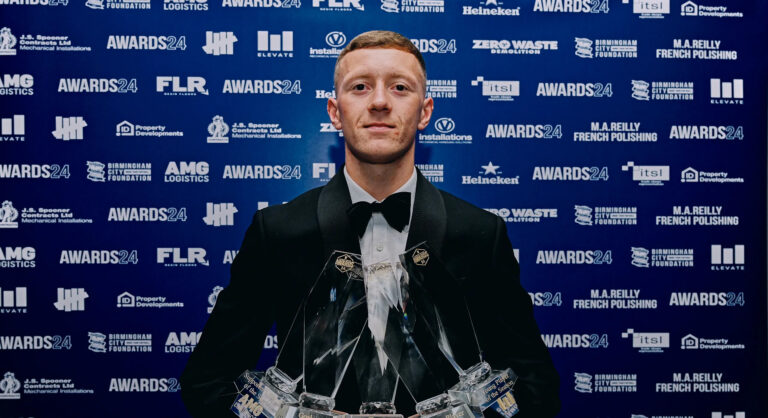
Jay Stansfield wins five awards in the 2023-24 season.
On the 5th of May, 2024, Blues held their annual player awards, a bitter sweet event following relegation to League One the day before.
The awards celebrated the best in class from the 2023/24 season, with both of Blues’ First Team squads and staff along with members of the Board, the Leadership Team and supporters in attendance.
All five Men’s awards were collected by England Under-21s international Jay Stansfield, as he was recognised, by both Blue Noses and his team mates, for an outstanding season on loan from Fulham. His achievements eclipse Che Adams’ four-award haul in 2019.
The 21-year-old’s thirteen goals earned him Supporters’ Player of the Season, Players’ Player of the Season, Young Player of the Season and Top Goalscorer.
And of his netbusters, Stansfield’s strike on his debut, a 96th-minute winner against Plymouth Argyle in August, won him Goal of the Season.
You can see the full list of Blues winners here.
Well done Jay and well deserved. You was one of a few that gave everything during your entire time playing here for Birmingham City and will be sadly missed. Good luck in your future going forward.
BluesFest 2024

Team Fry and Team Dugarry at BluesFest 2024.
On the 11th of May, 2024, Blues hosted the first-ever BluesFest at St. Andrew’s.
Blues legends and a host of celebrities came together to raise funds for the Birmingham City Foundation, with the centre-piece being a match on the B9 pitch that contributed to the fundraising total.
The teams, led by former Manager, Barry Fry, and 2002 FIFA Men’s World Cup winner, Christophe Dugarry, played out a thrilling 6-6 draw before penalties determined the overall winner.

Barry Fry settles into the Head Coach’s Office.

Christophe Dugarry recreates his iconic celebration.
You can see more photos from the day and read more about BluesFest 2024 here.
It’s fantastic to see things like this happening at St. Andrews highlighting what a great family club we are. The more positive exposure we get the better.
The highlights of Bluesfest 2024 that took place on May the 11th at St Andrew’s.
Announcement Regarding Tony Mowbray Standing Down As Blues Manager

Tony Mowbray Standing Down As Blues Manager Announcement.
On the 21st of May, 2024, the club made an announcement to Blues fans regarding Tony Mowbray standing down as Blues manager due to his health following an unexpected surgery earlier in the year.
Mowbray has informed the Club of his decision to stand down as Men’s First Team Manager with immediate effect.
Mowbray, who temporarily stepped away from his on-site management duties in February before taking a formal medical leave of absence in March, has decided to focus on making a full recovery from his surgery and spending time with his family.
The 60-year-old arrived at Blues in January and claimed victory in four of his eight matches at the helm, including back-to-back Championship victories over former teams Blackburn Rovers and Sunderland, and securing progression in the F.A. Cup.
Due to the suddenness of his announcing he was leaving due to ill health, it was always questionable if he was ever going to return at all for the 2024/25 season. Every Blues fan hoped he would come back to guide us out of League One and quickly back to the Championship. With his experience in League One in the past, he was the number one man for the job but sadly that isn’t going to be.
I wish him all the best for the future, whatever he decides to do and I fully respect his decision for family and good health, mentally, physically or both, should always come first over any job. I, and many Blues fans, would like to thank him again for coming to us in the first place albeit for a short stay. Here’s to a speedy recovery Tony.
KEEP RIGHT ON.
Blog Posts
Birmingham City: A Tribute To Trevor Francis.
Birmingham City: Blues Are Sadly Relegated To League One.
Birmingham City: Blues History.
Birmingham City: First Team Squad For The 2023/24 Season.
Birmingham City: Fixtures, Results And Goal Scorers For The 2023/24 Season.
Birmingham City: Gary Rowett, Paul Robinson And Dave Carolan Return To Steady The Ship For Blues.
Birmingham City: January Transfers For The 2023/24 Season.
Birmingham City: Keep Right On To The End Of The Road.
Birmingham City: Kits For The 2023/24 Season.
Birmingham City: My First Home Game Of The 2023/24 Season.
Birmingham City: Staff For The 2023/24 Season.
Notes And Links
The image shown at the top of this page is copyright of Birmingham City F.C.
The above links in the Before Knighthead section will take you to Wikipedia and its content is subject to change.
The links in the Next Chapter section will take you to the Birmingham Mail and Birmingham City’s websites.
Birmingham City F.C. – Official website.
Birmingham City on Facebook – This is their official Facebook page.
Birmingham City on Twitter – This is their official Twitter page.
Birmingham City on YouTube – This is their official YouTube page.
Blues Store Online – Birmingham City’s official club store online.
Help Harry Help Others – Official website.
Help Harry Help Others on Twitter.


